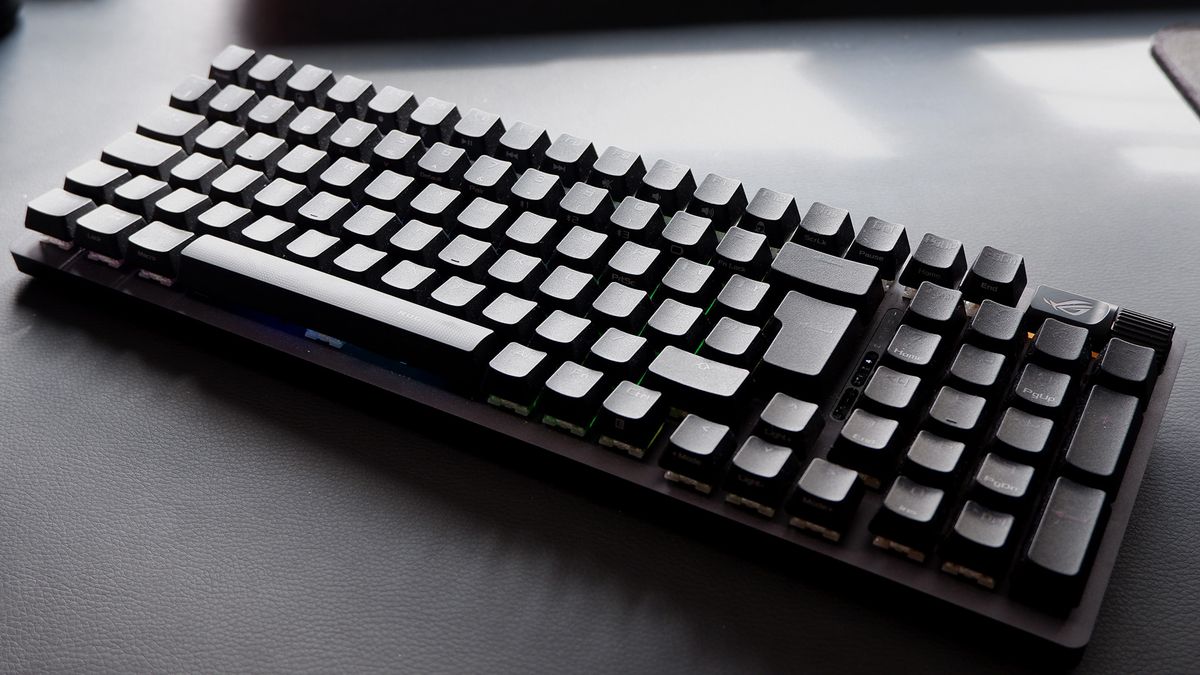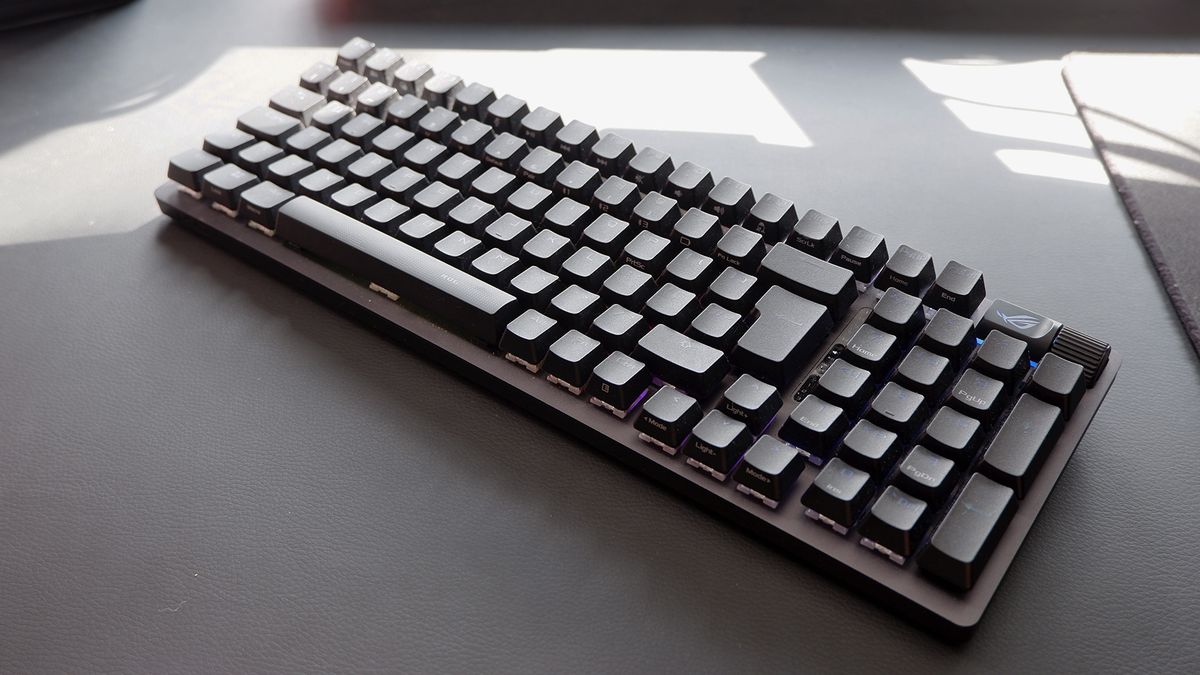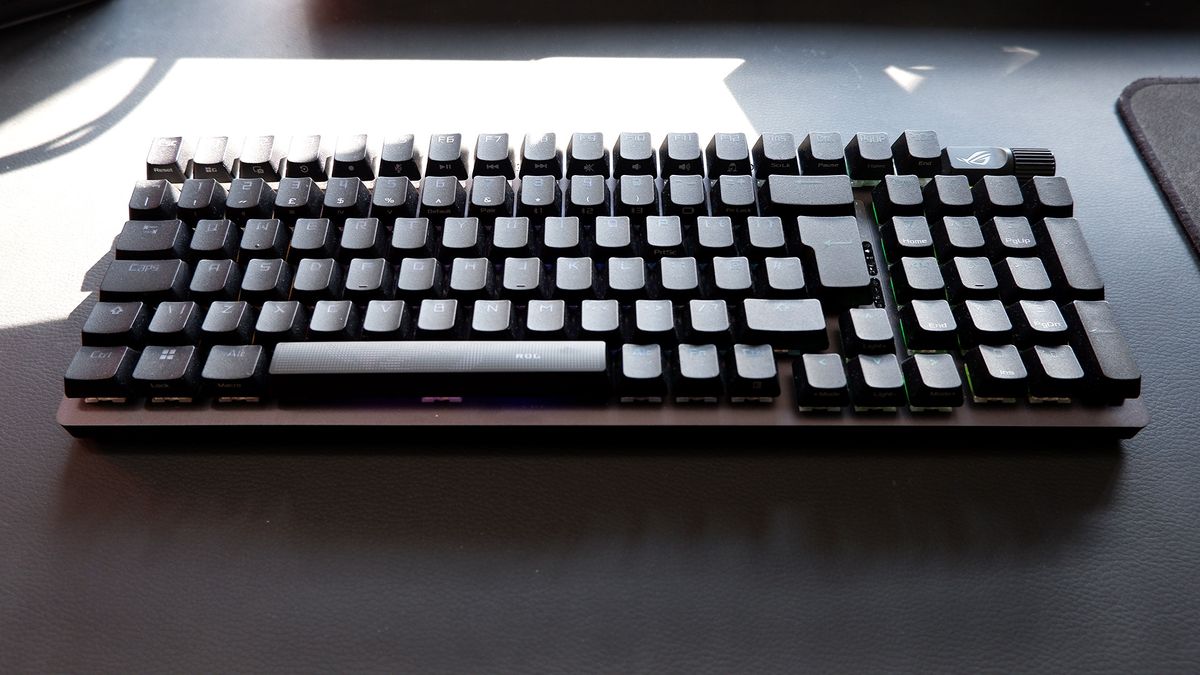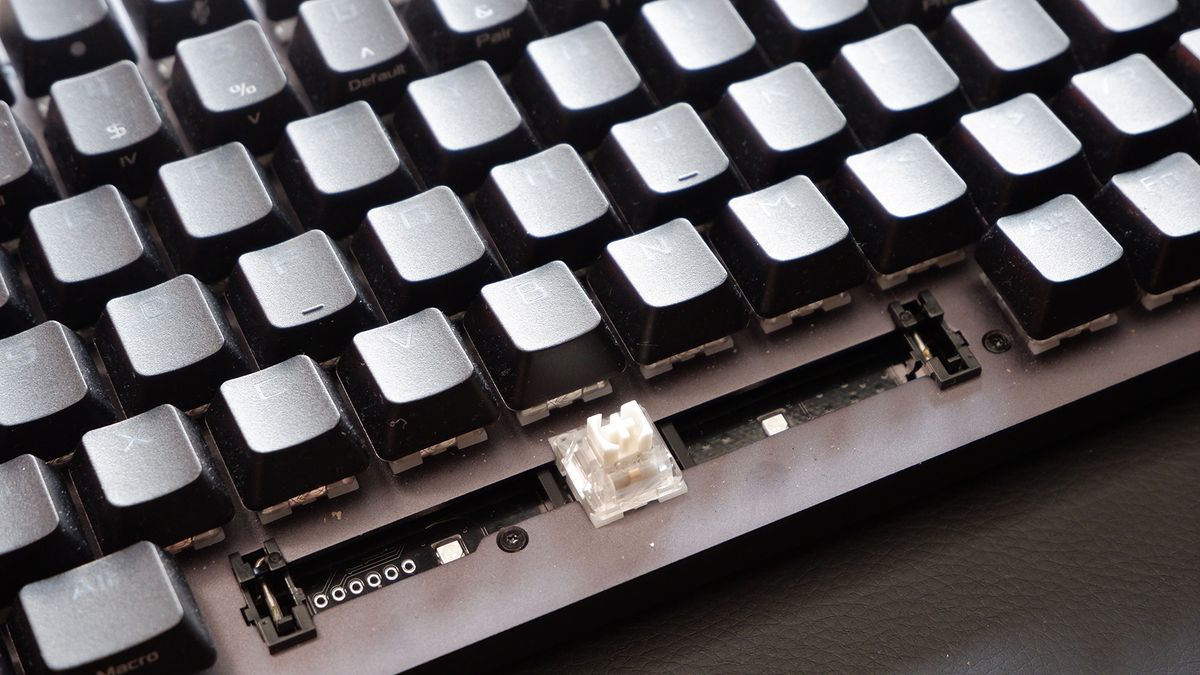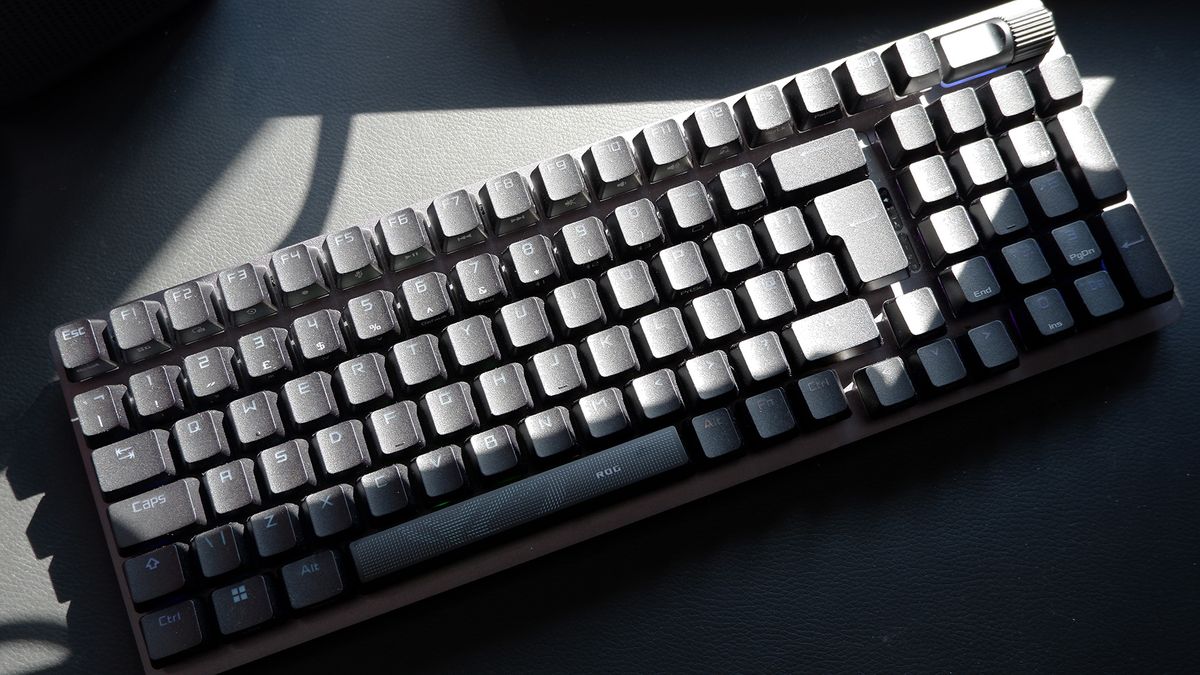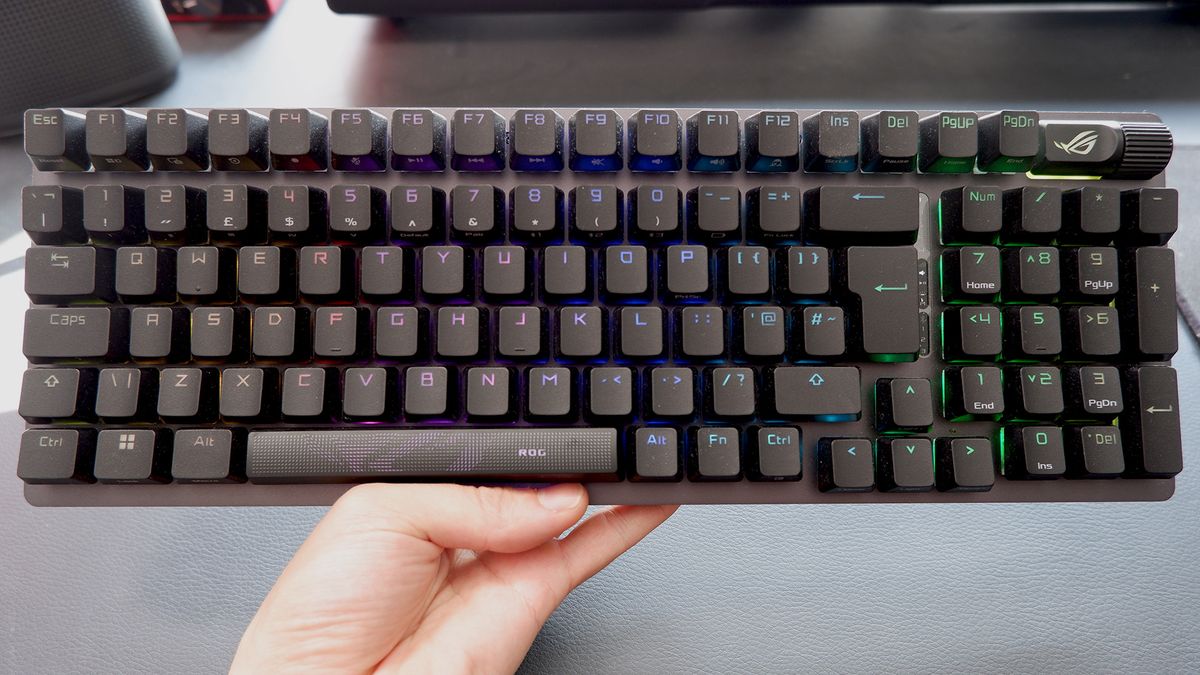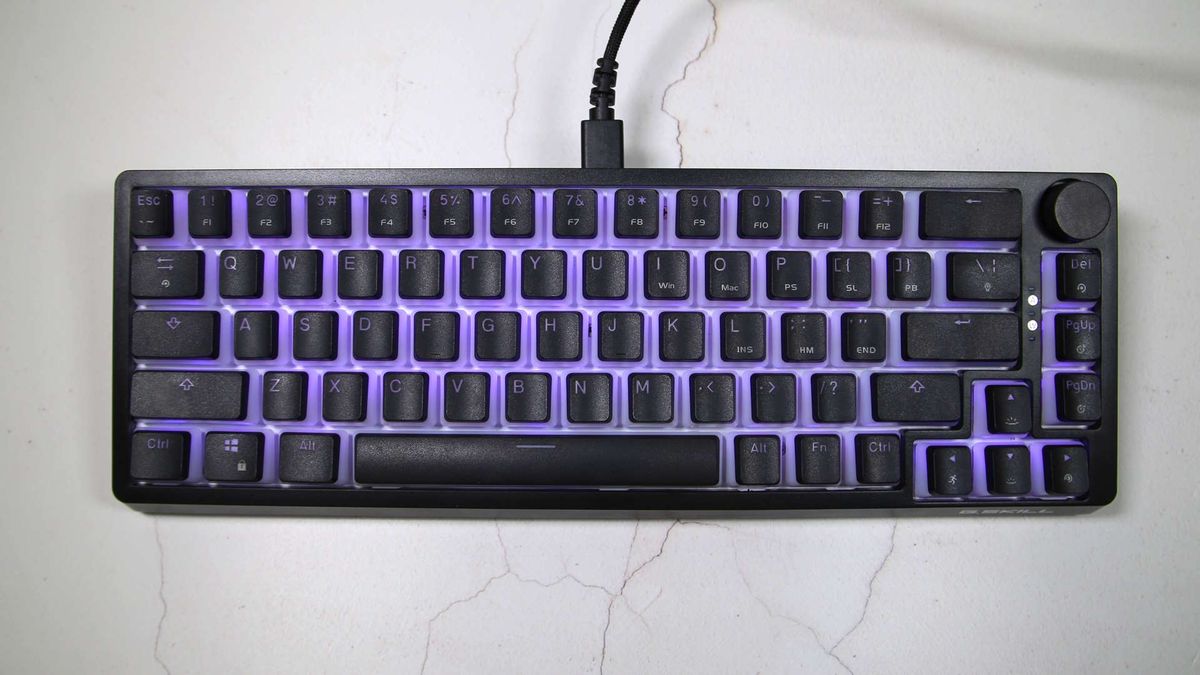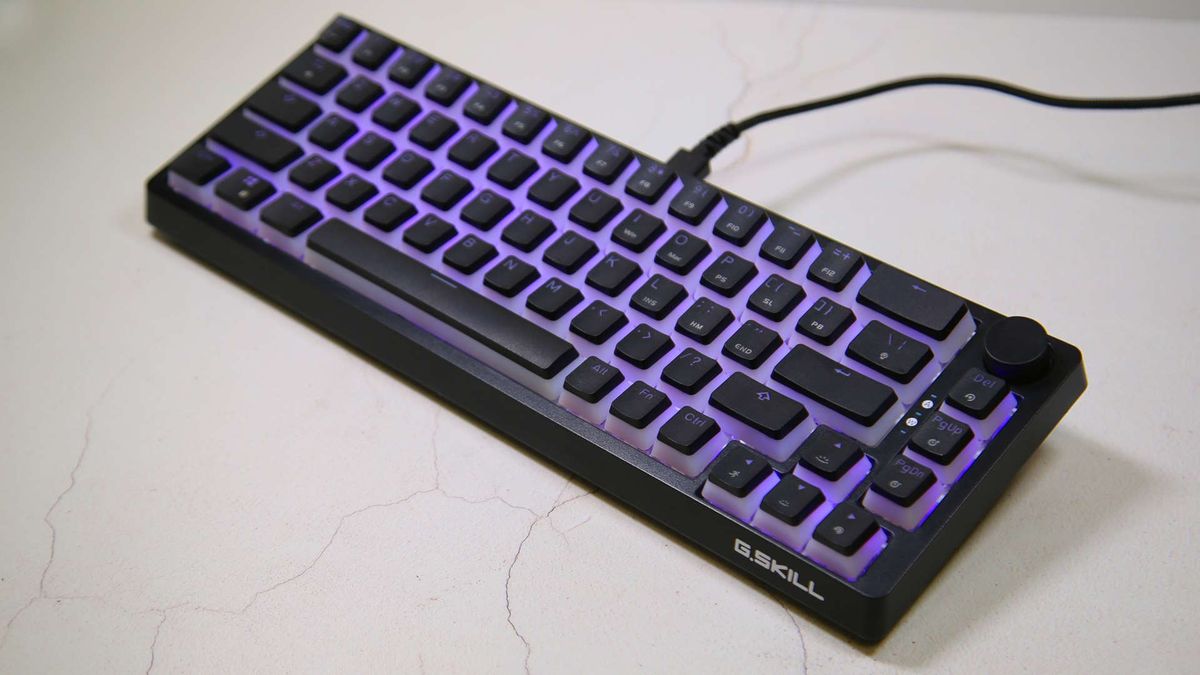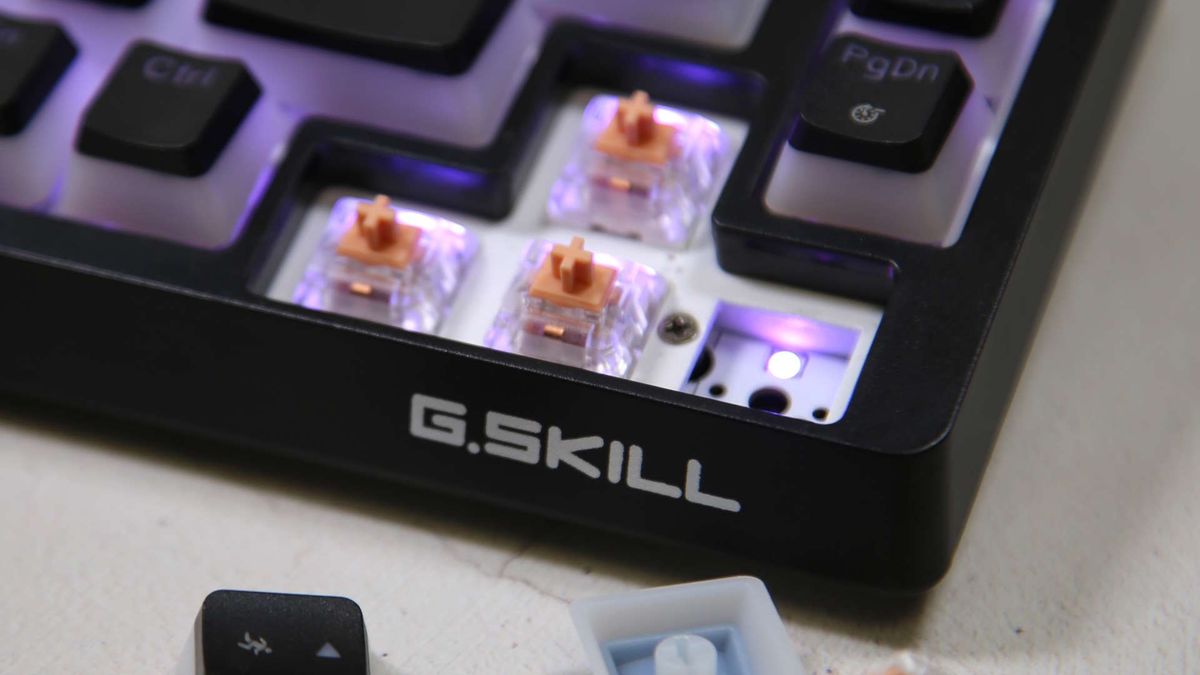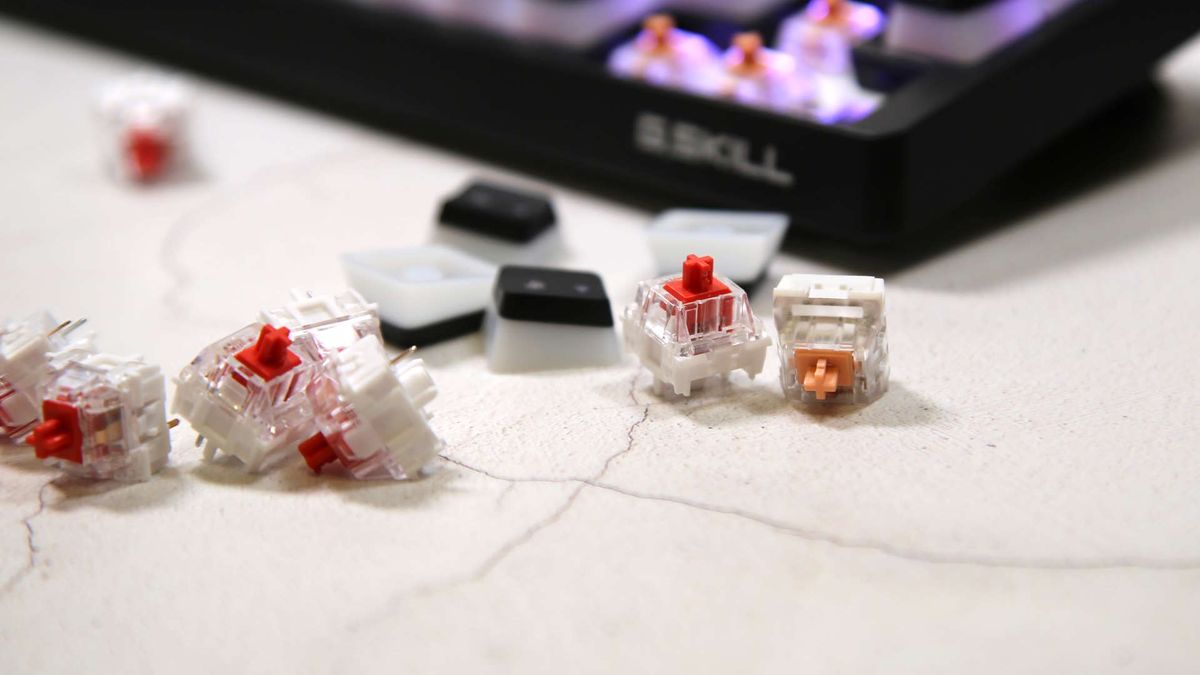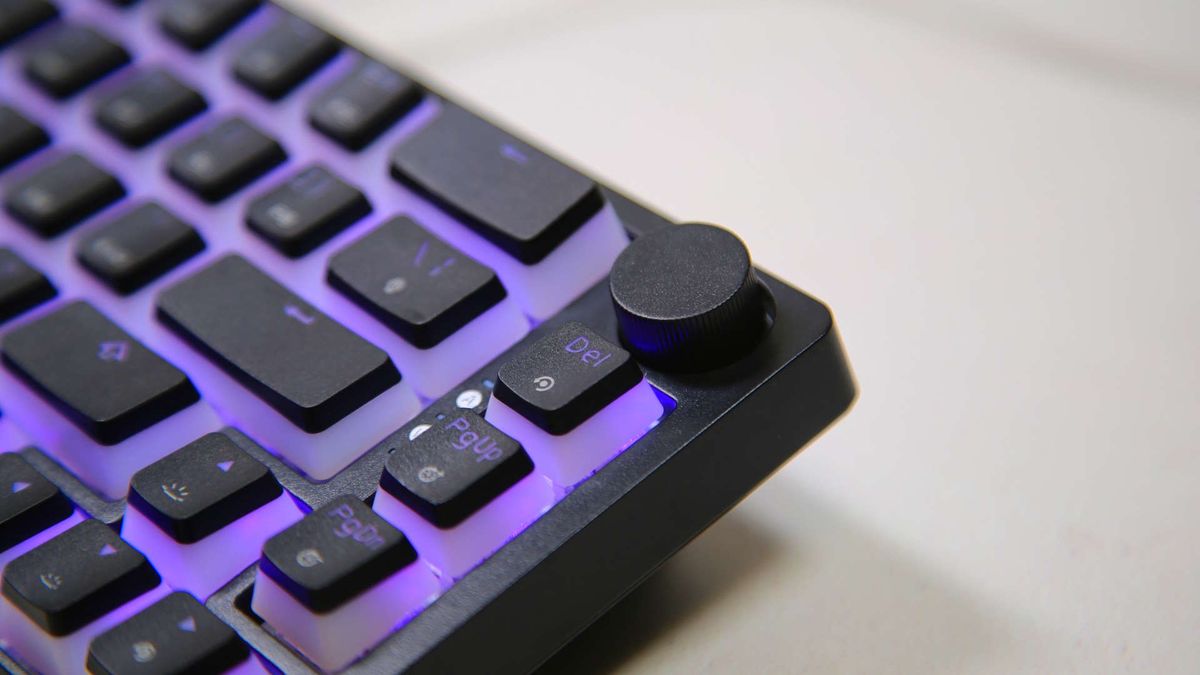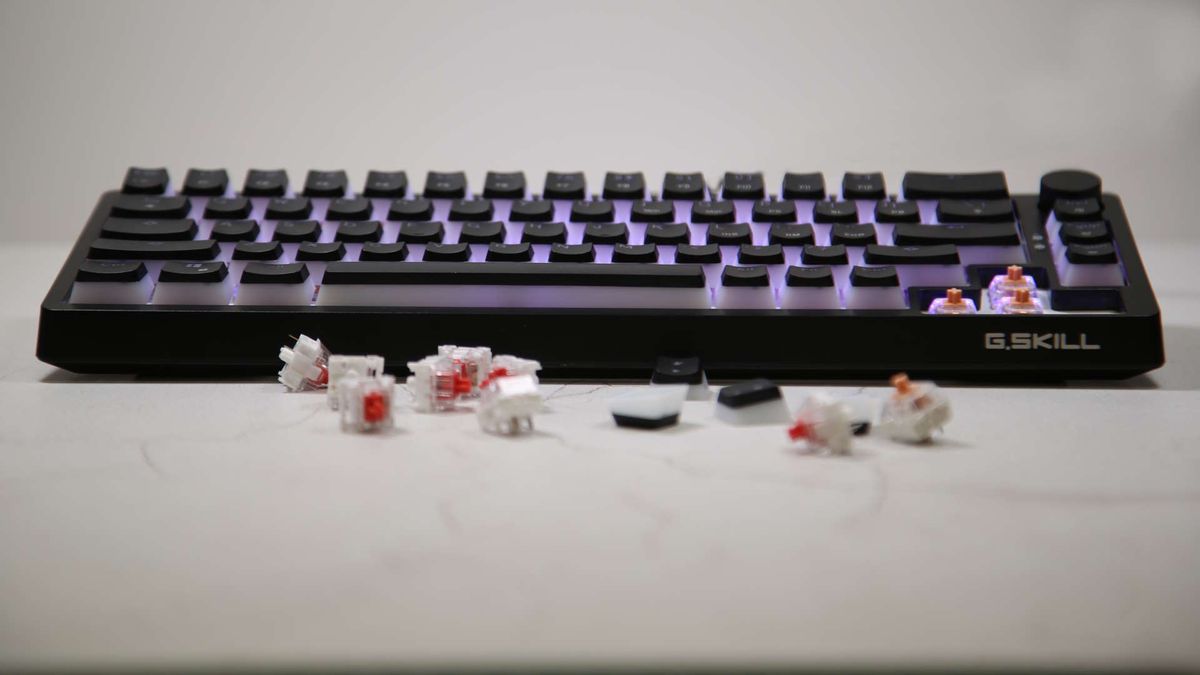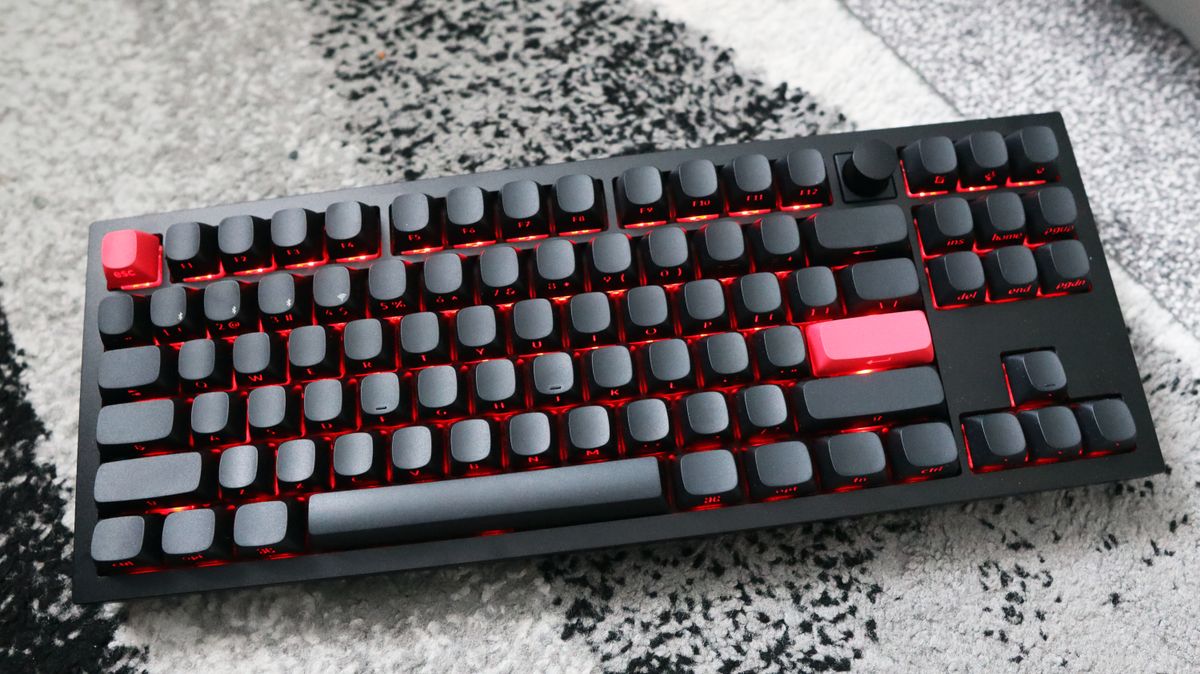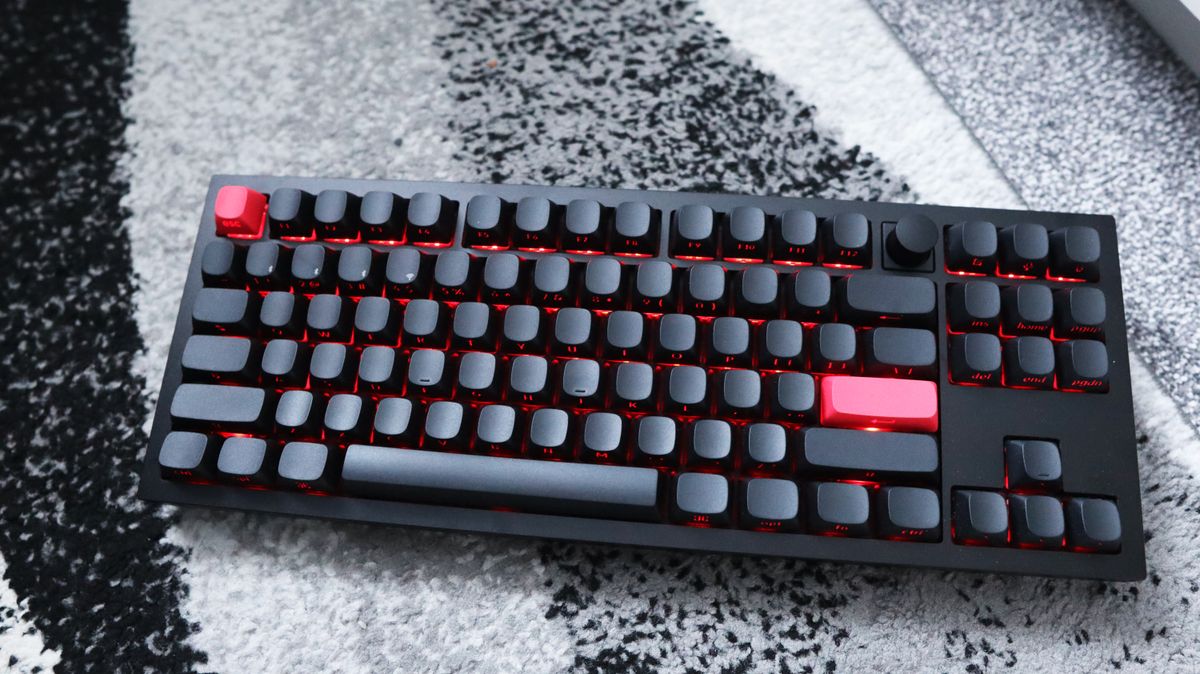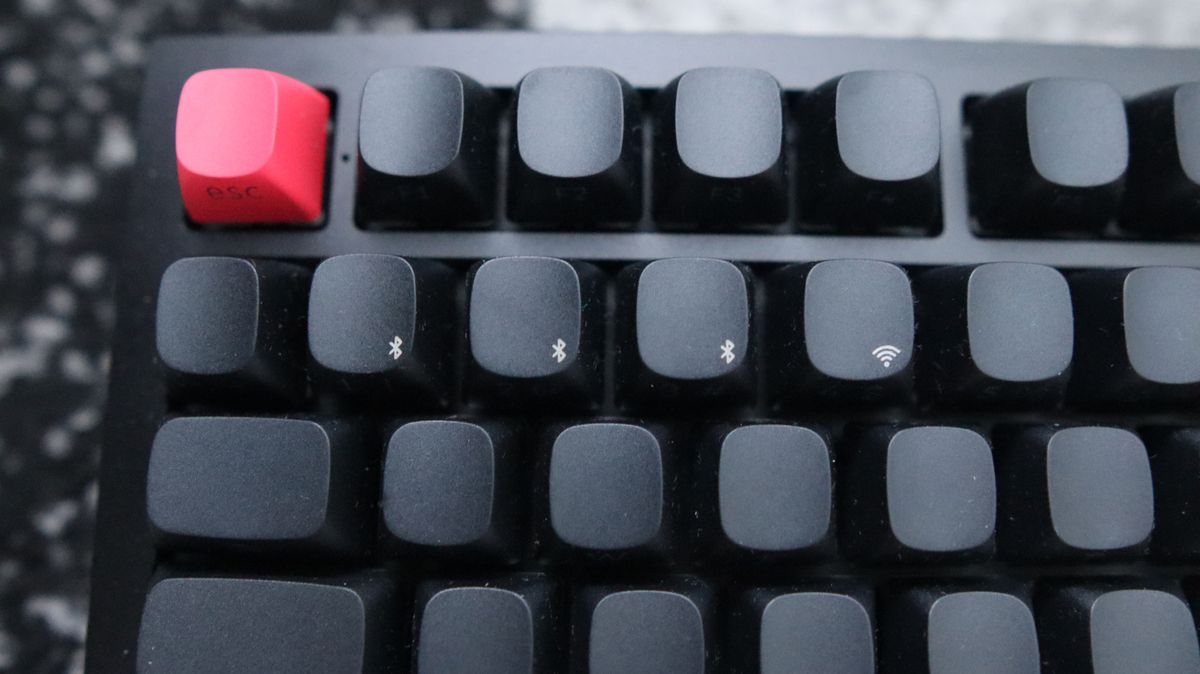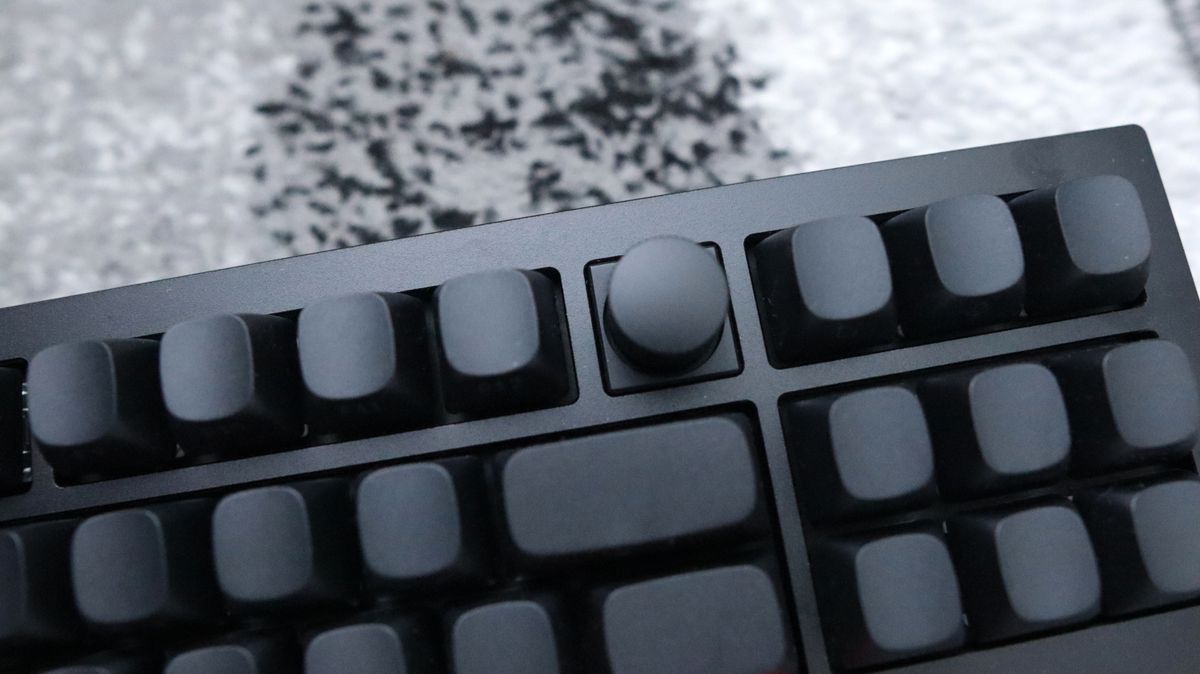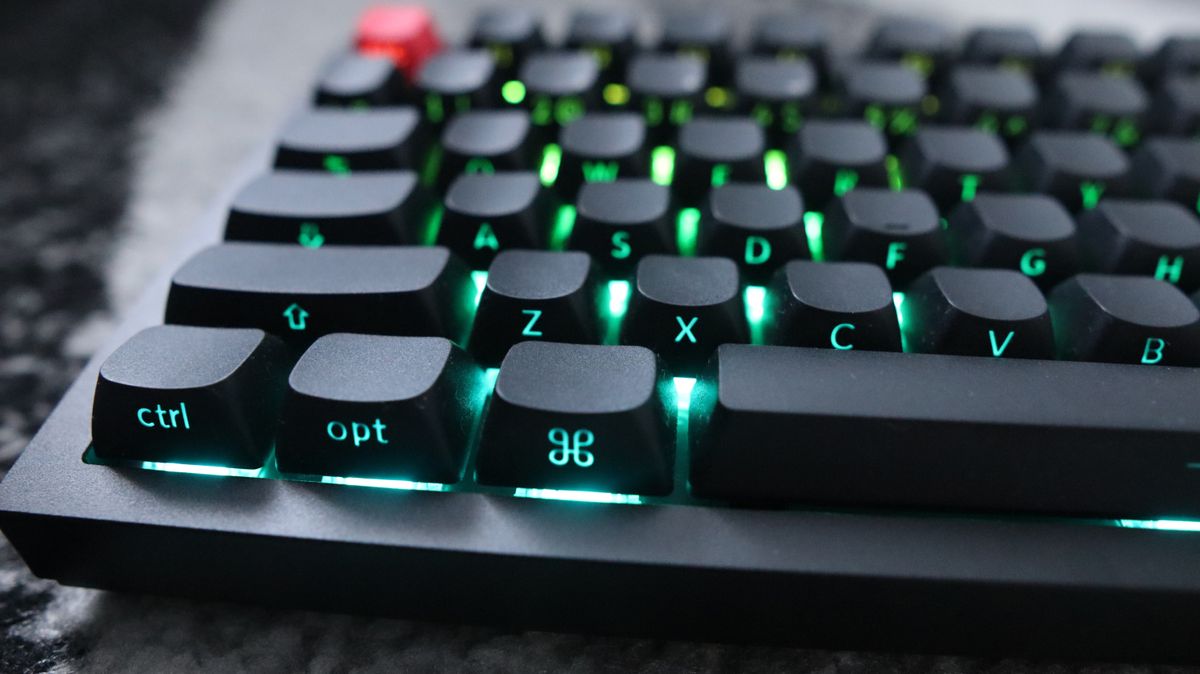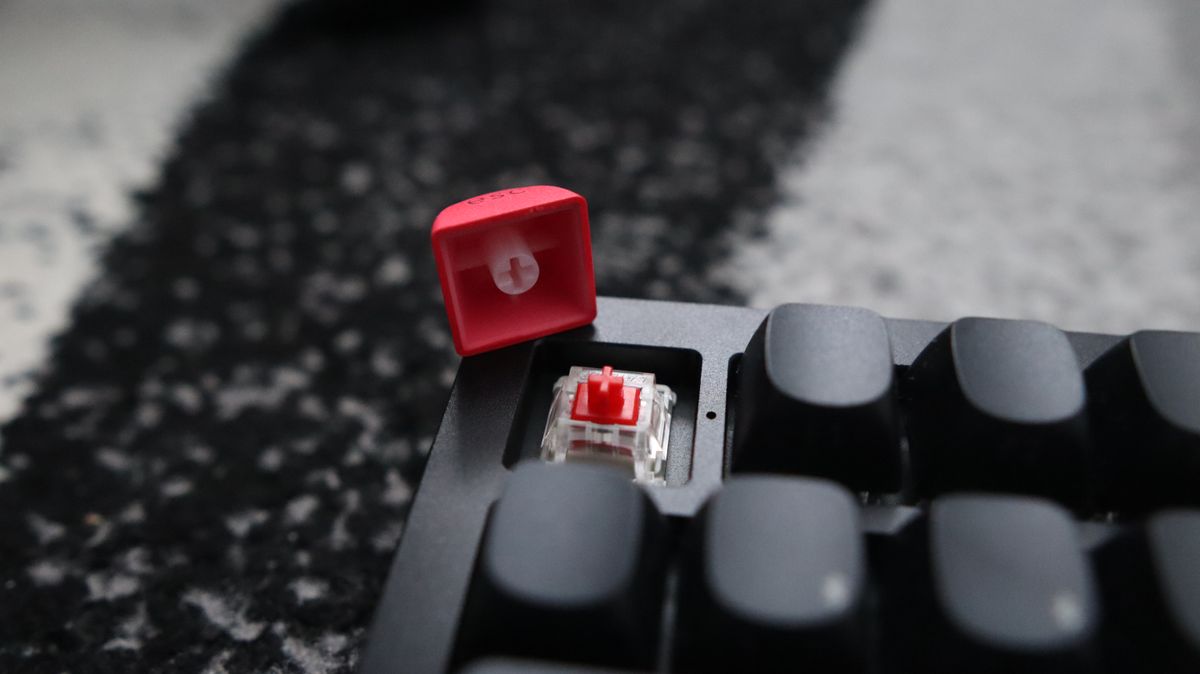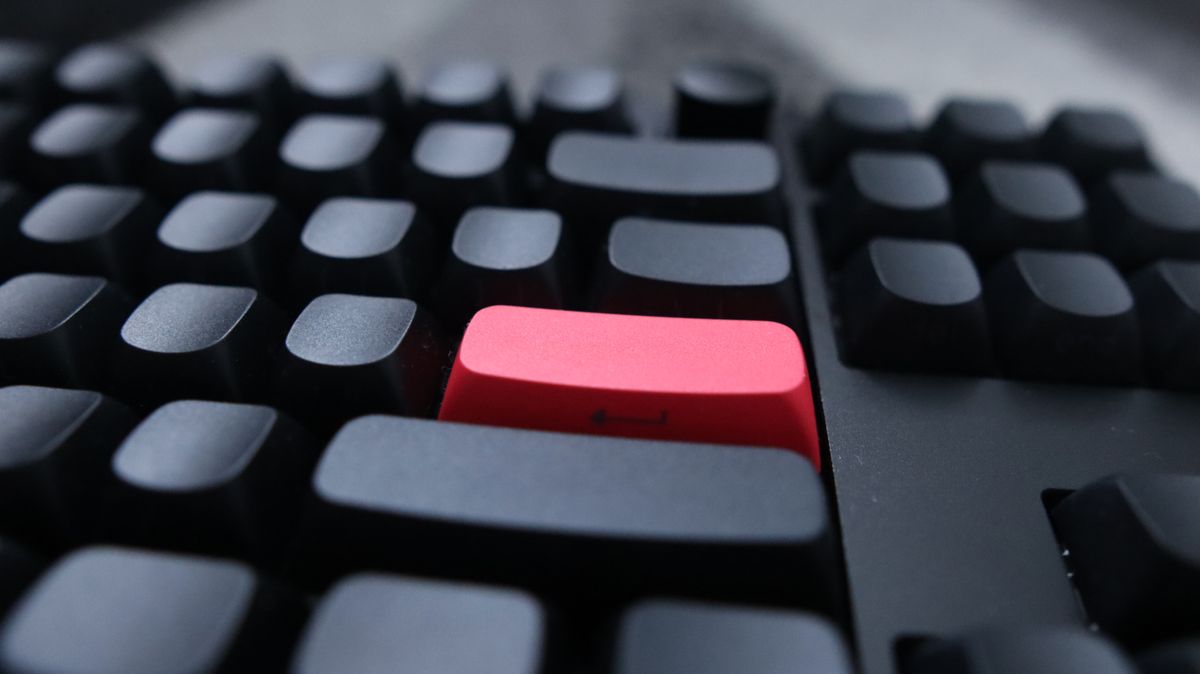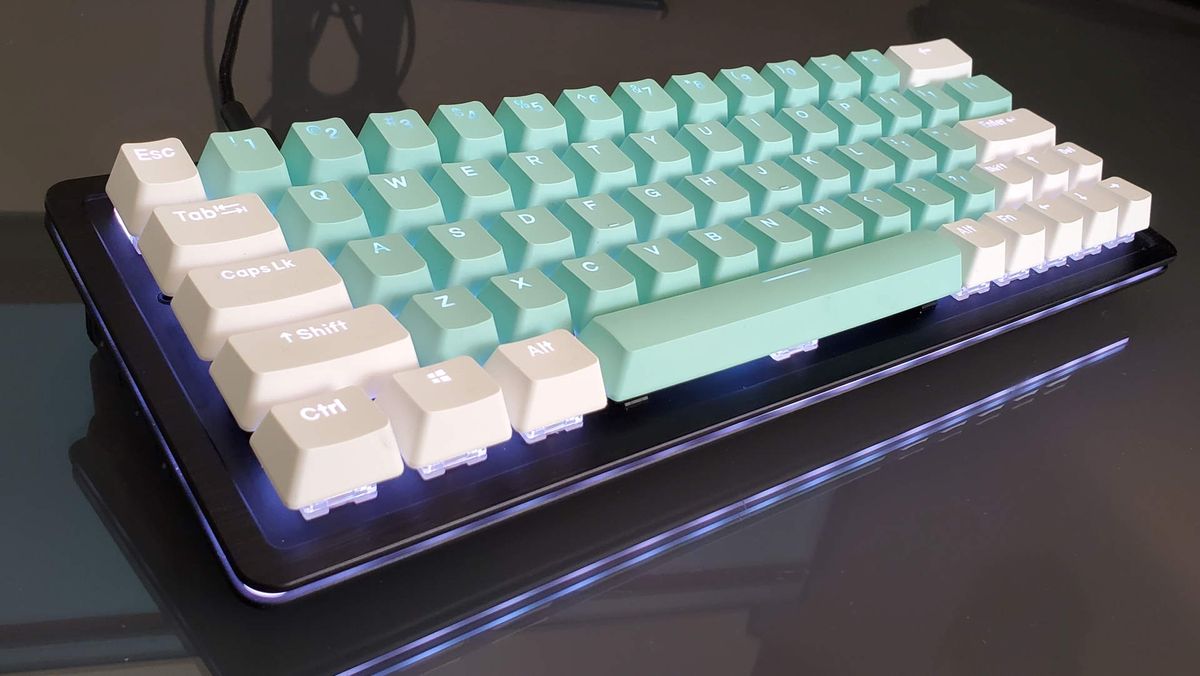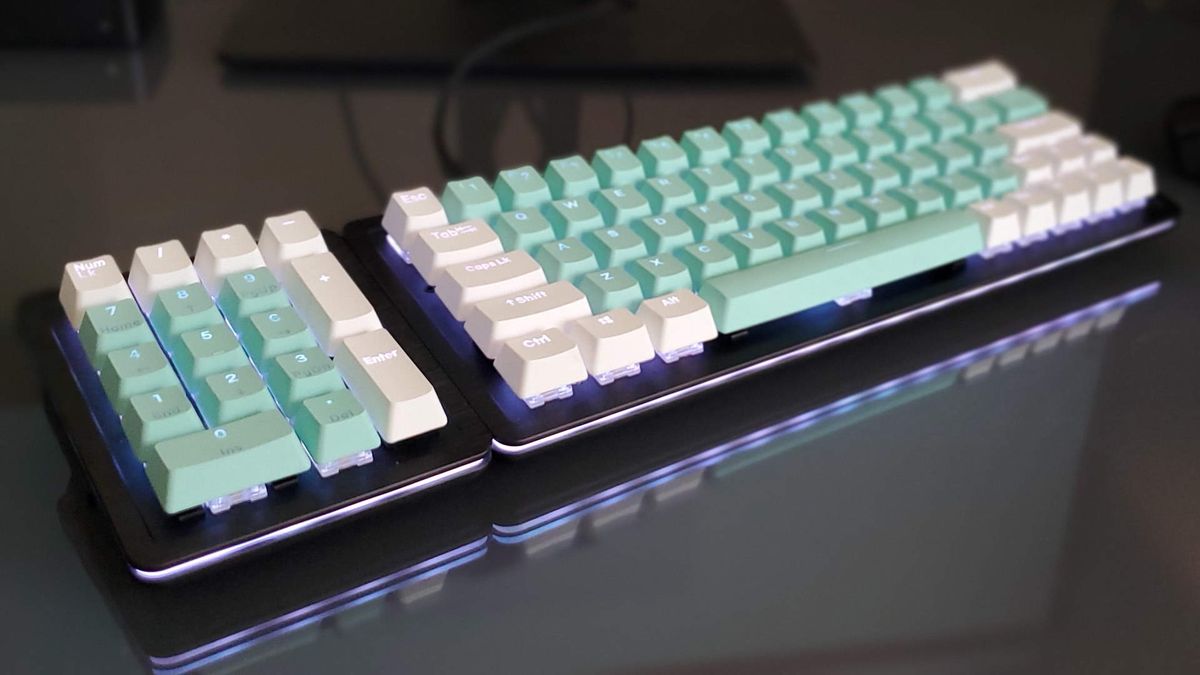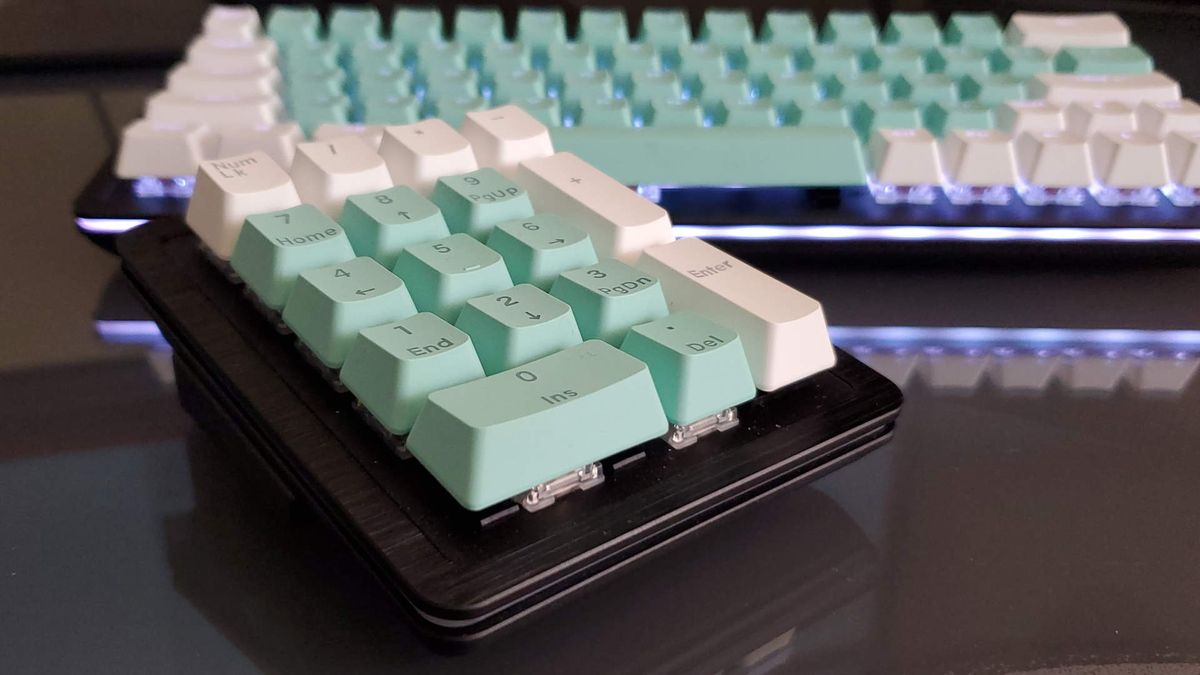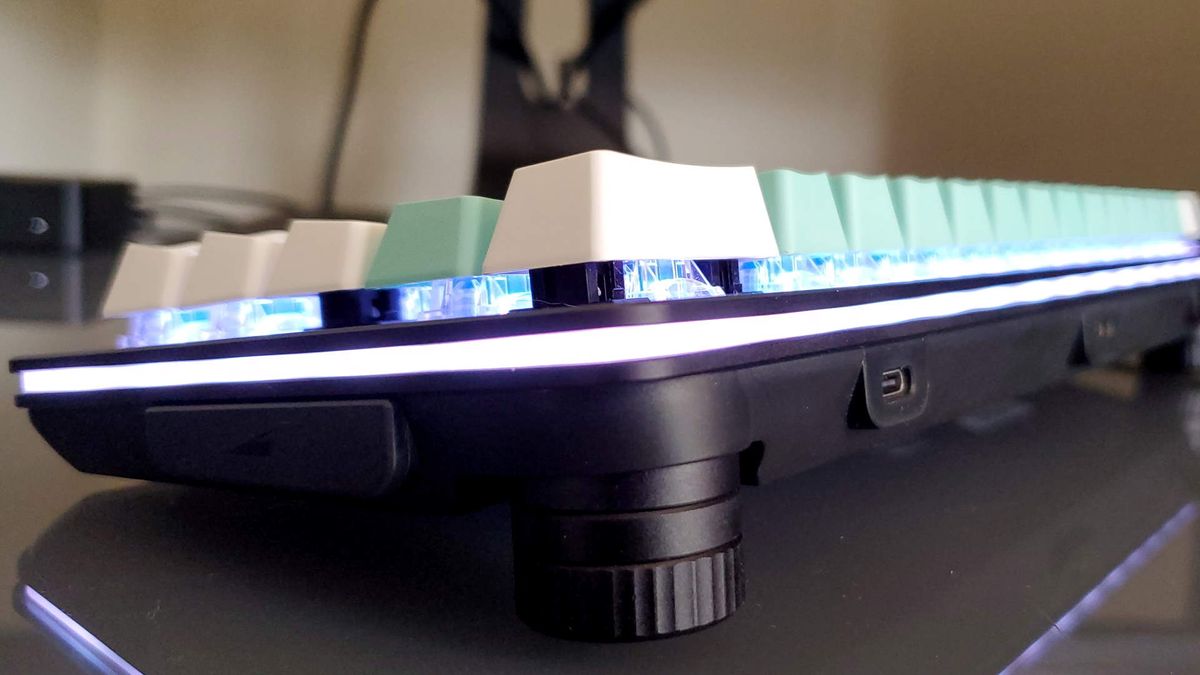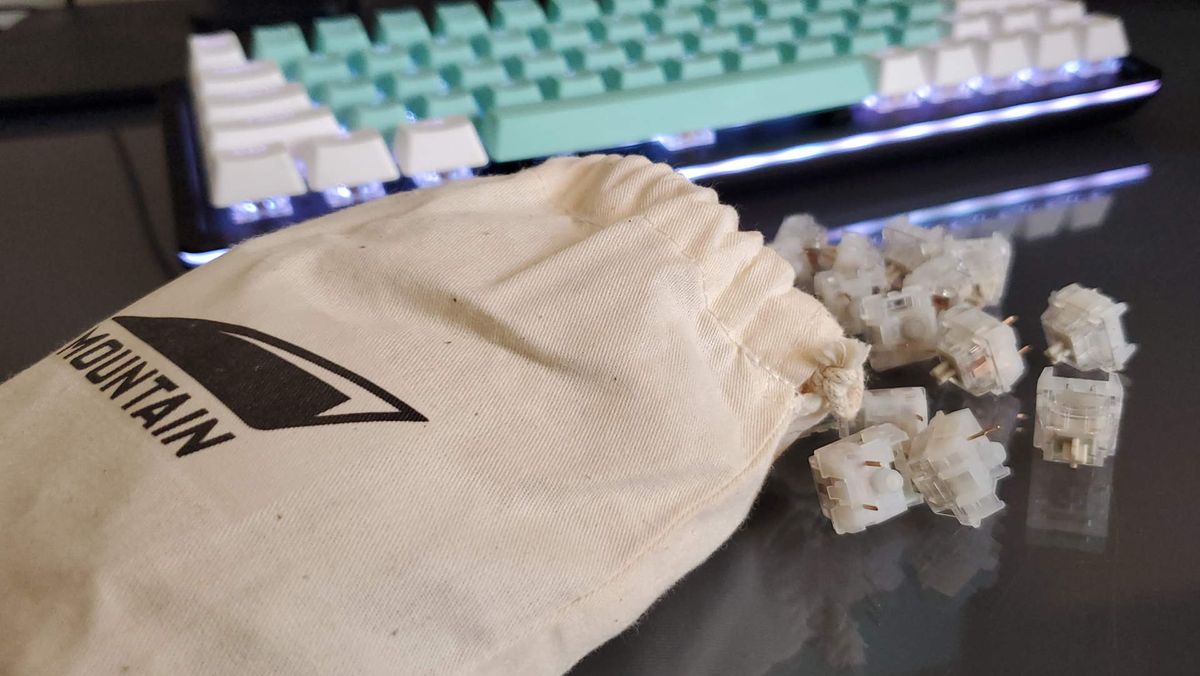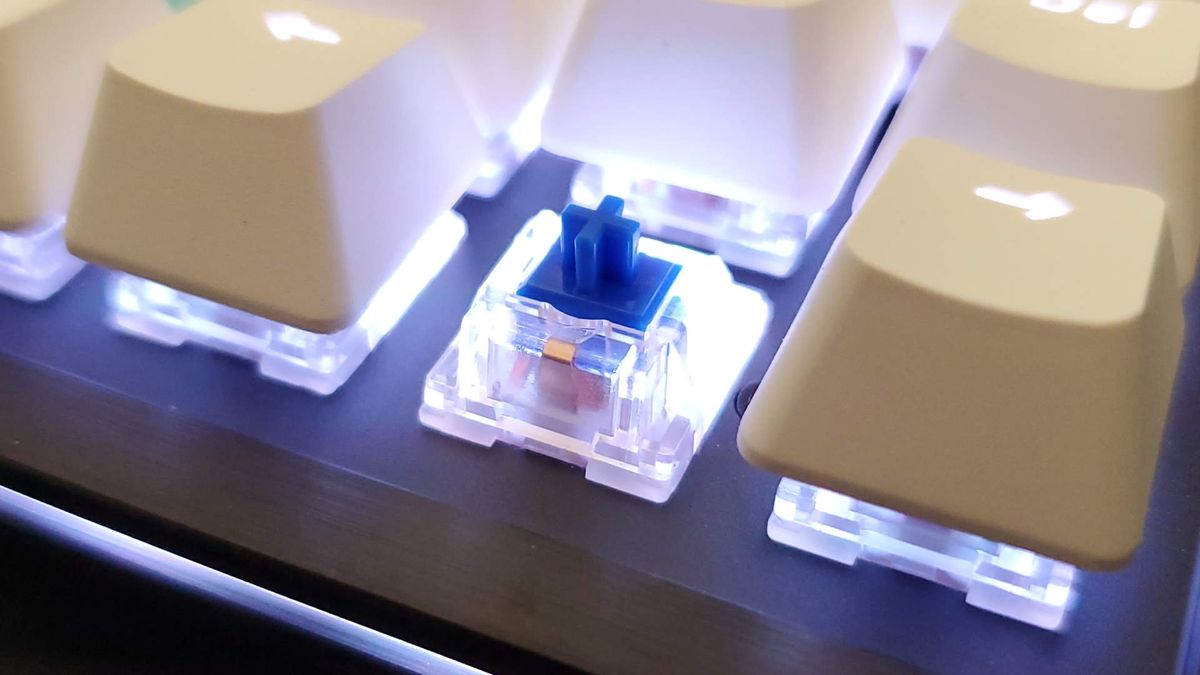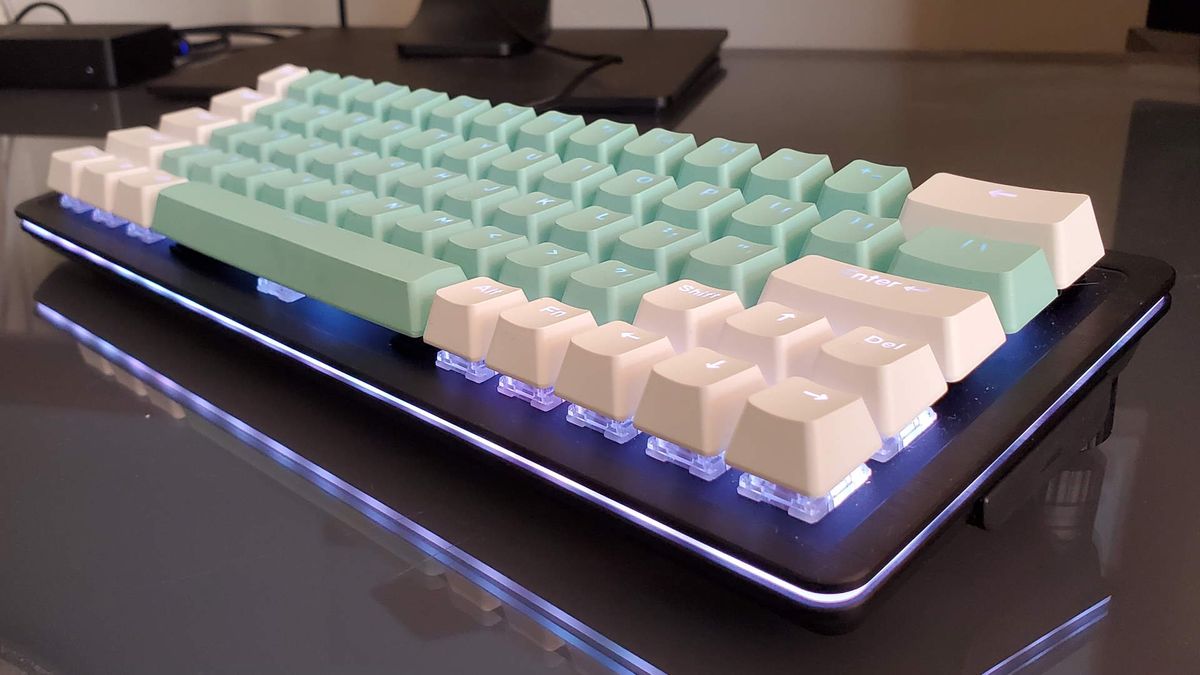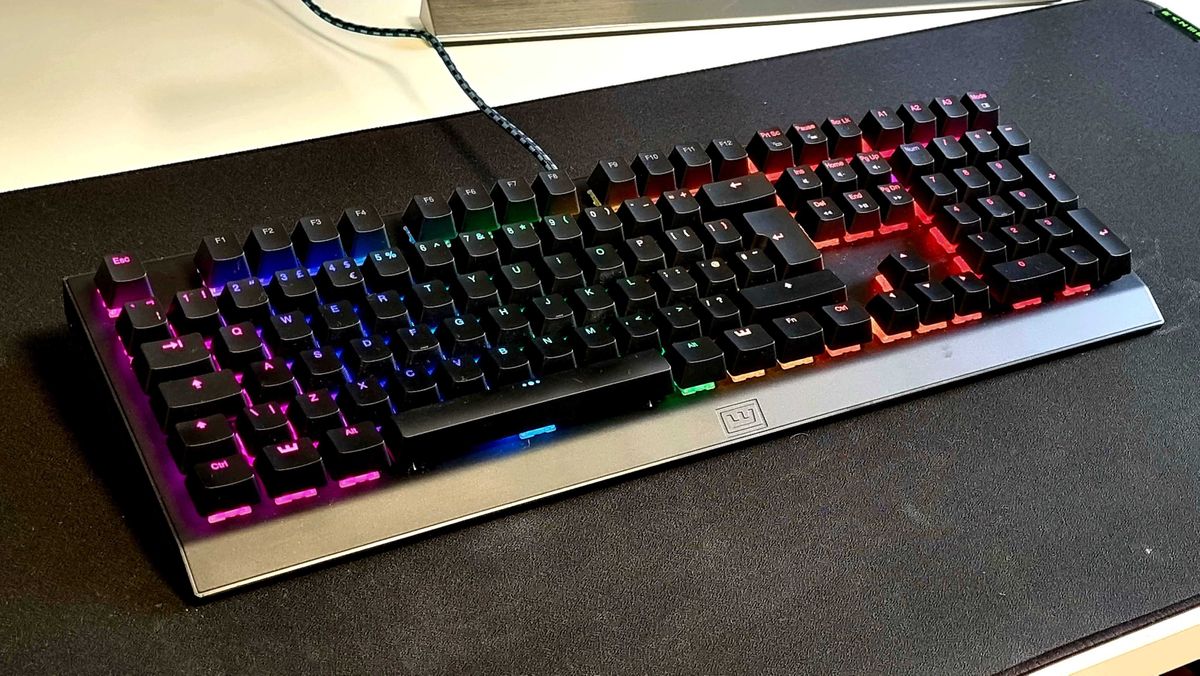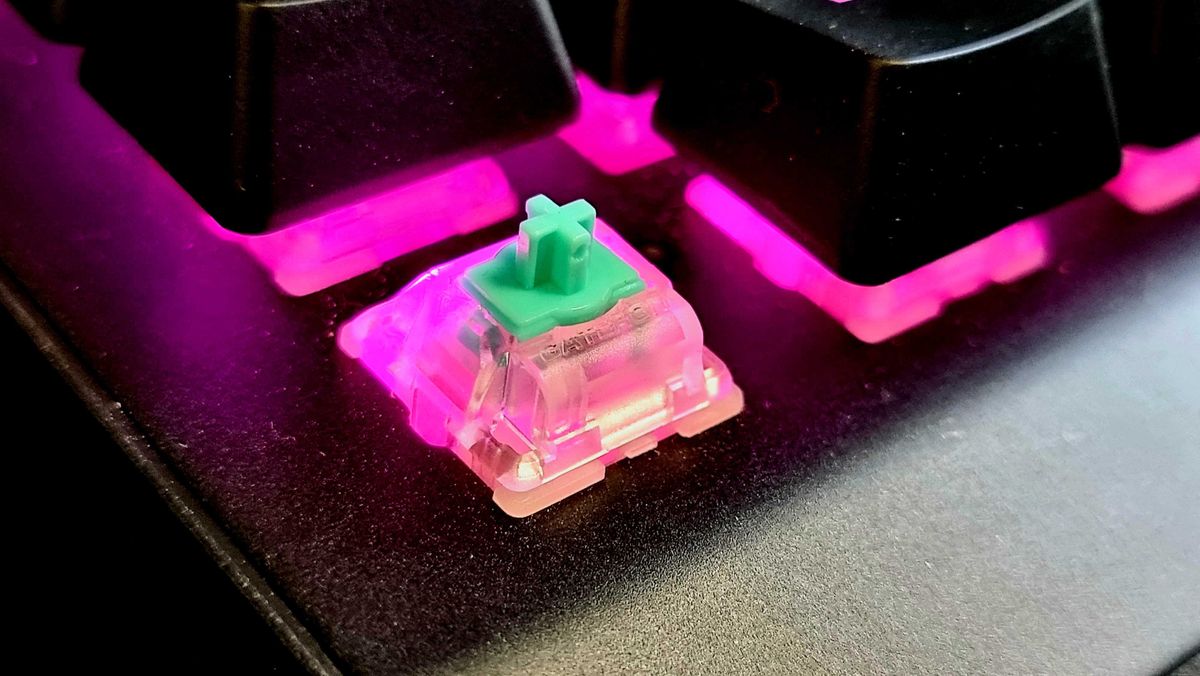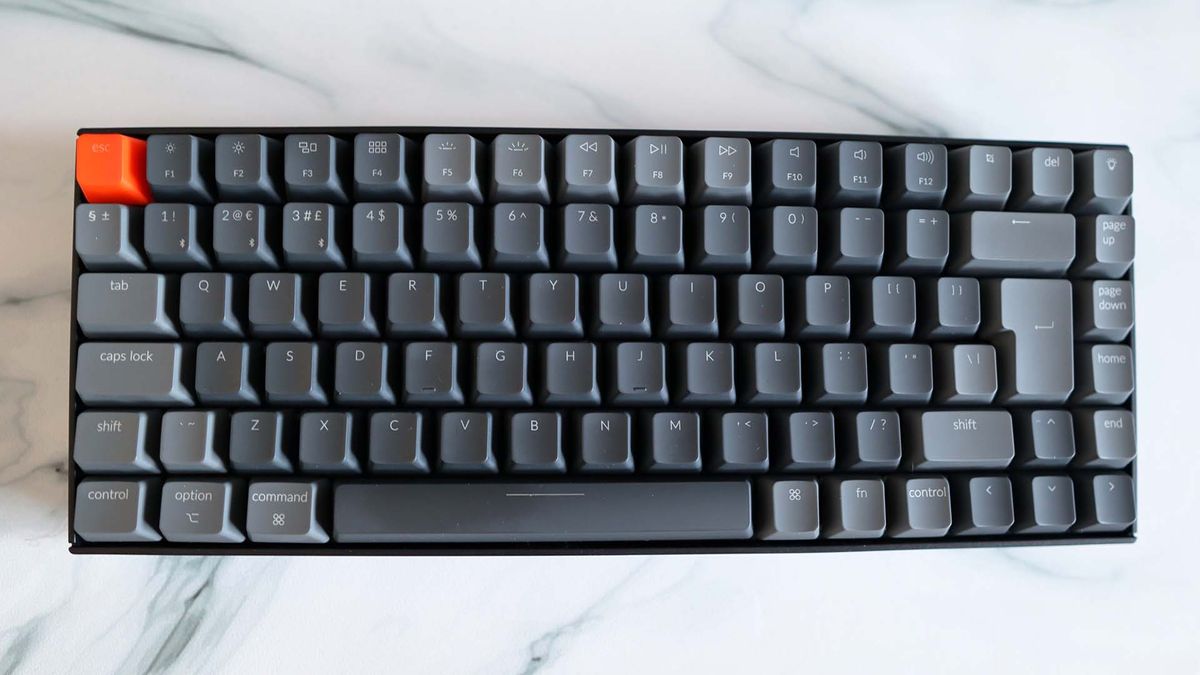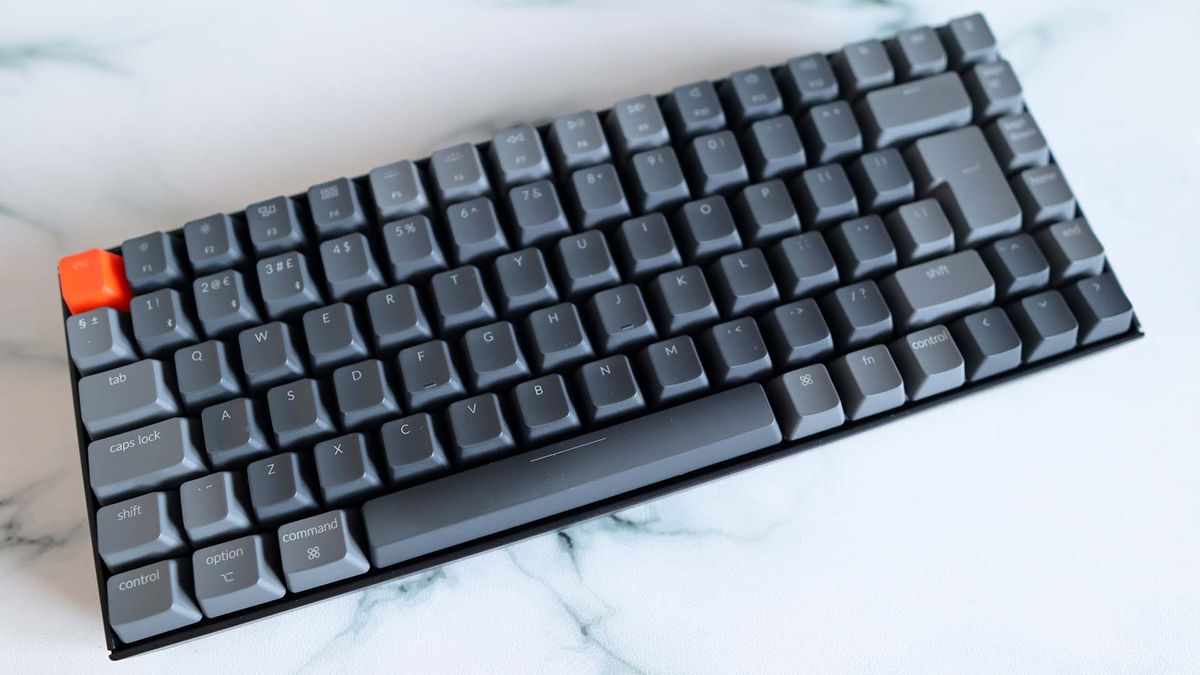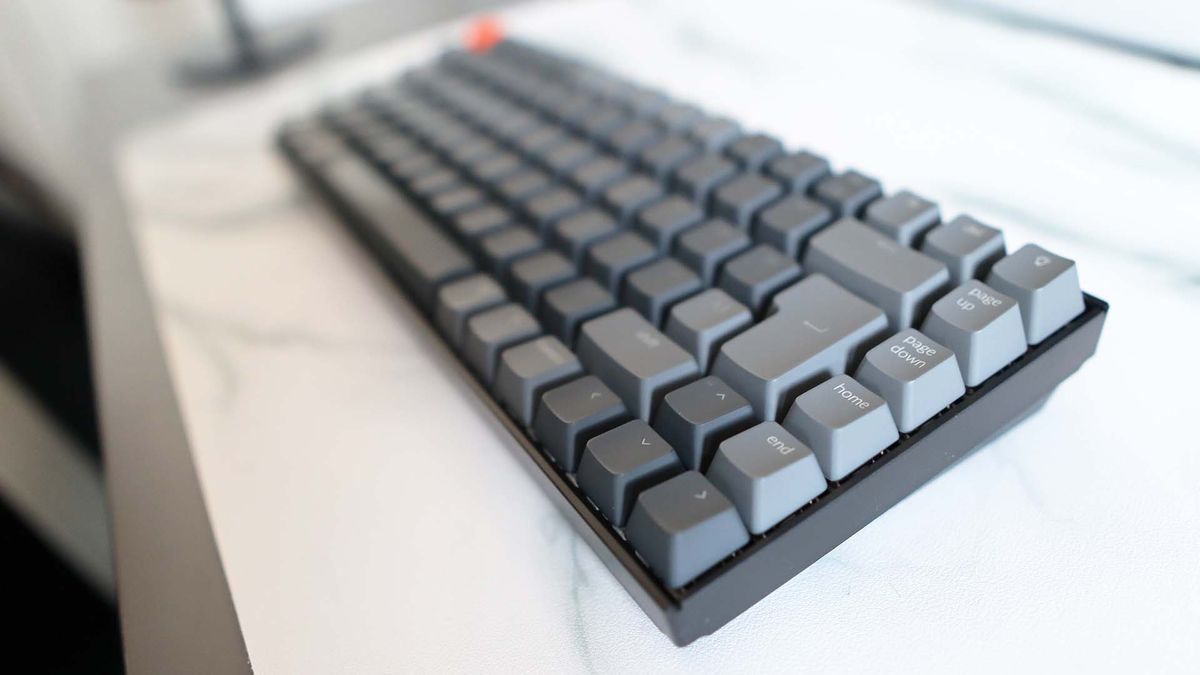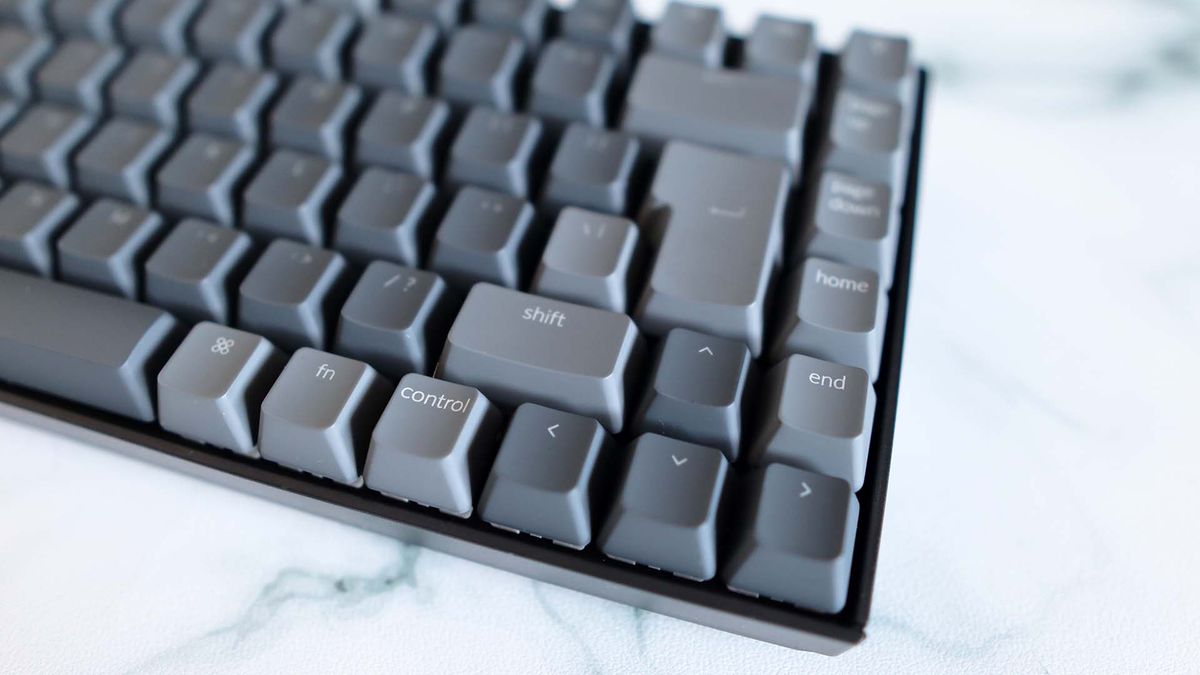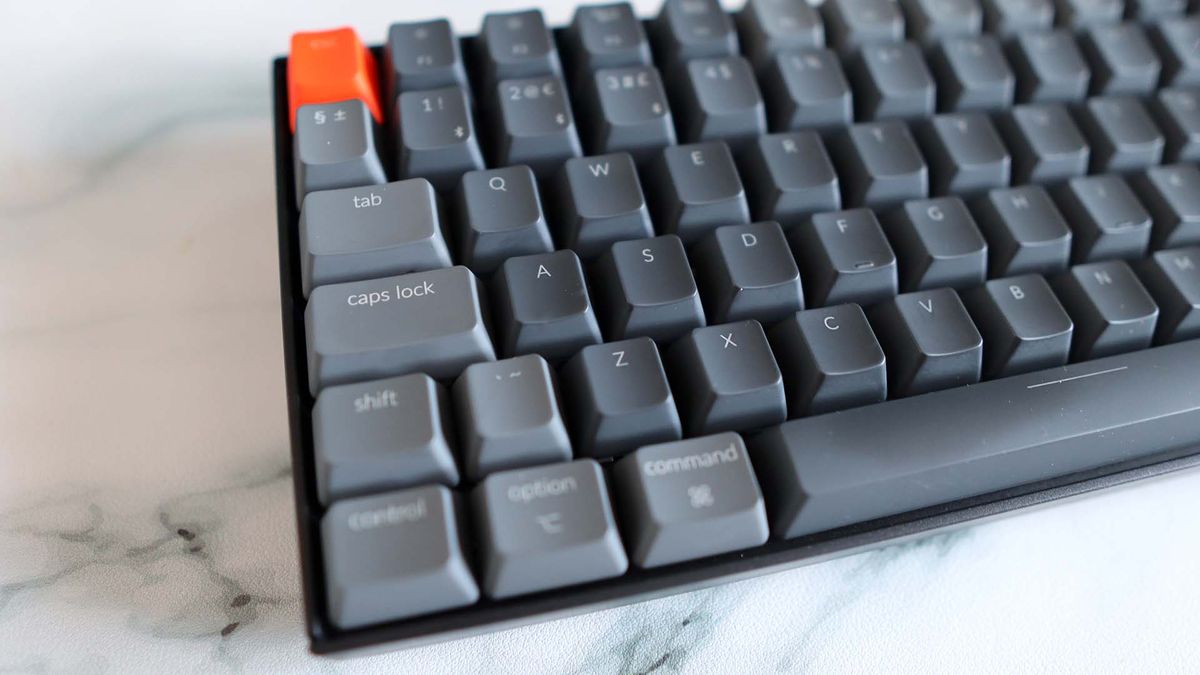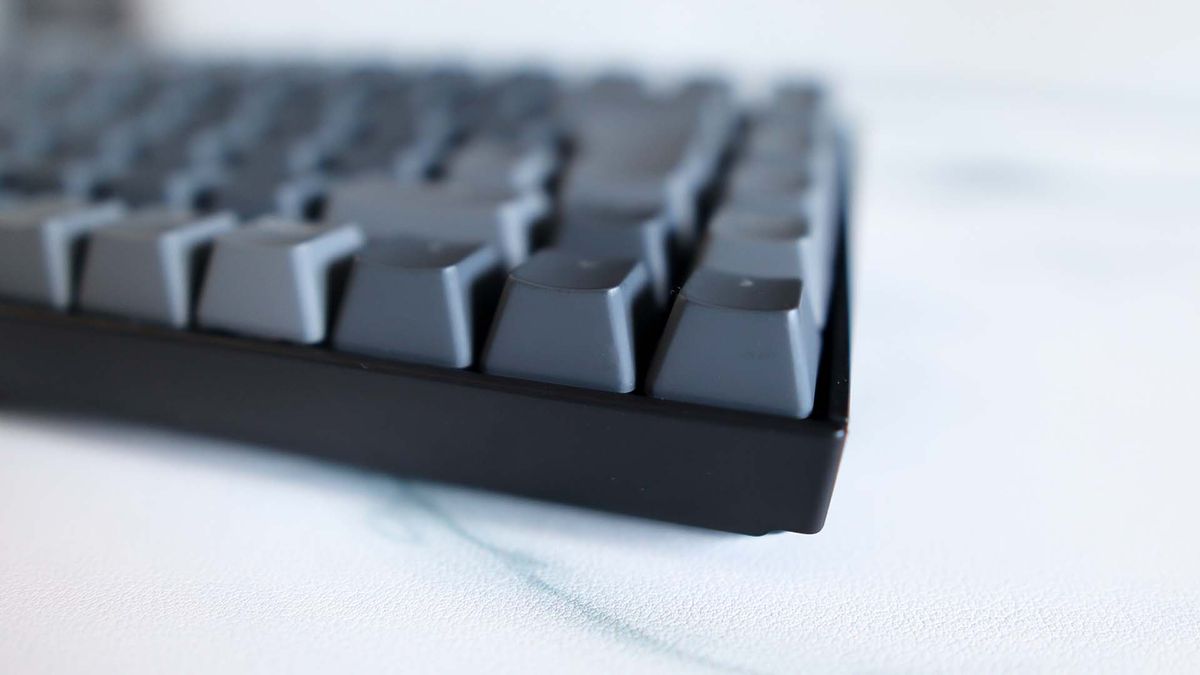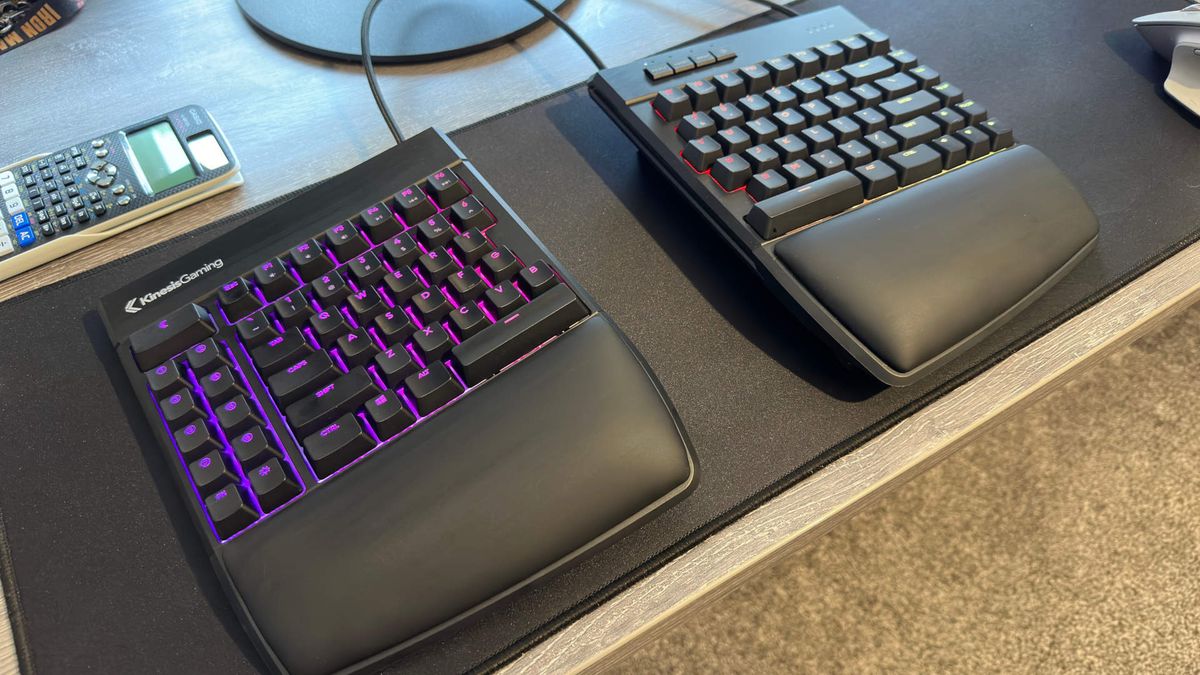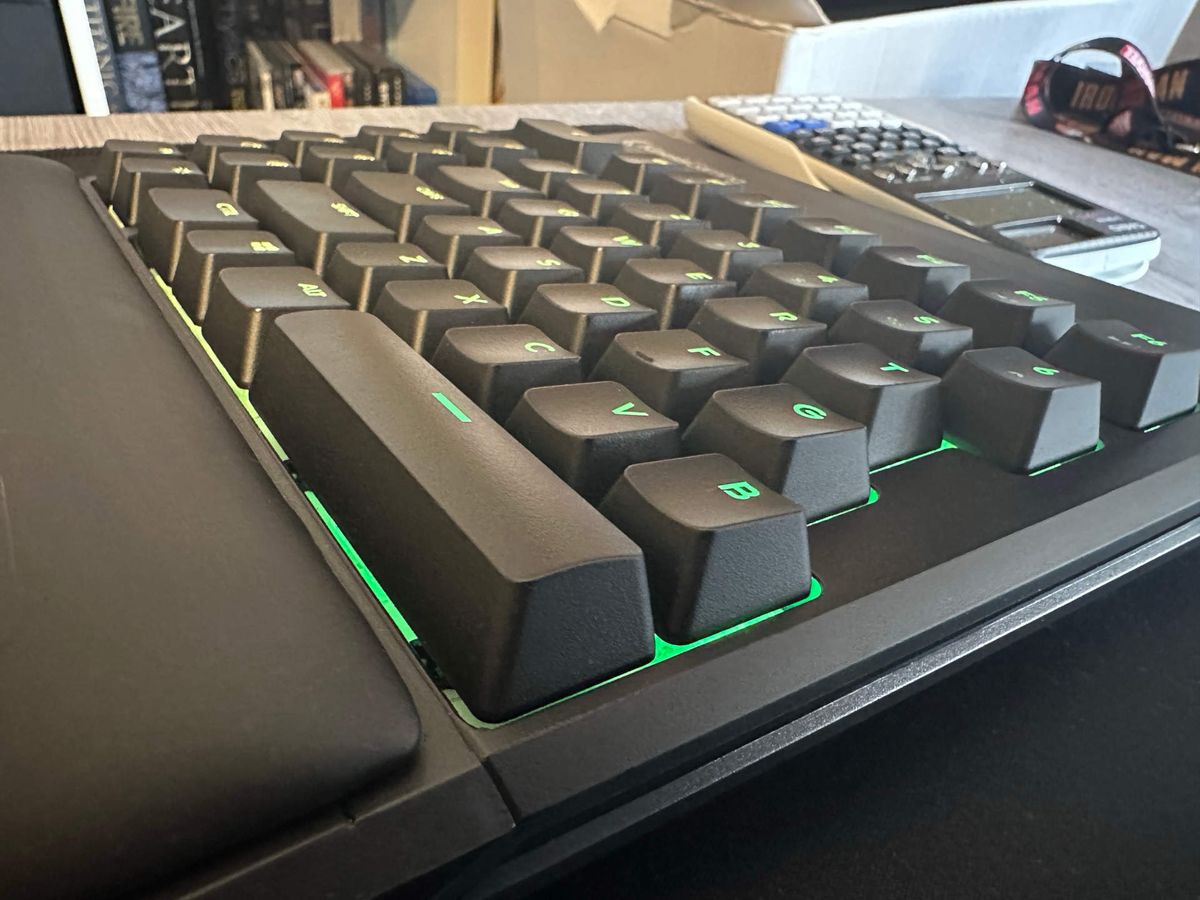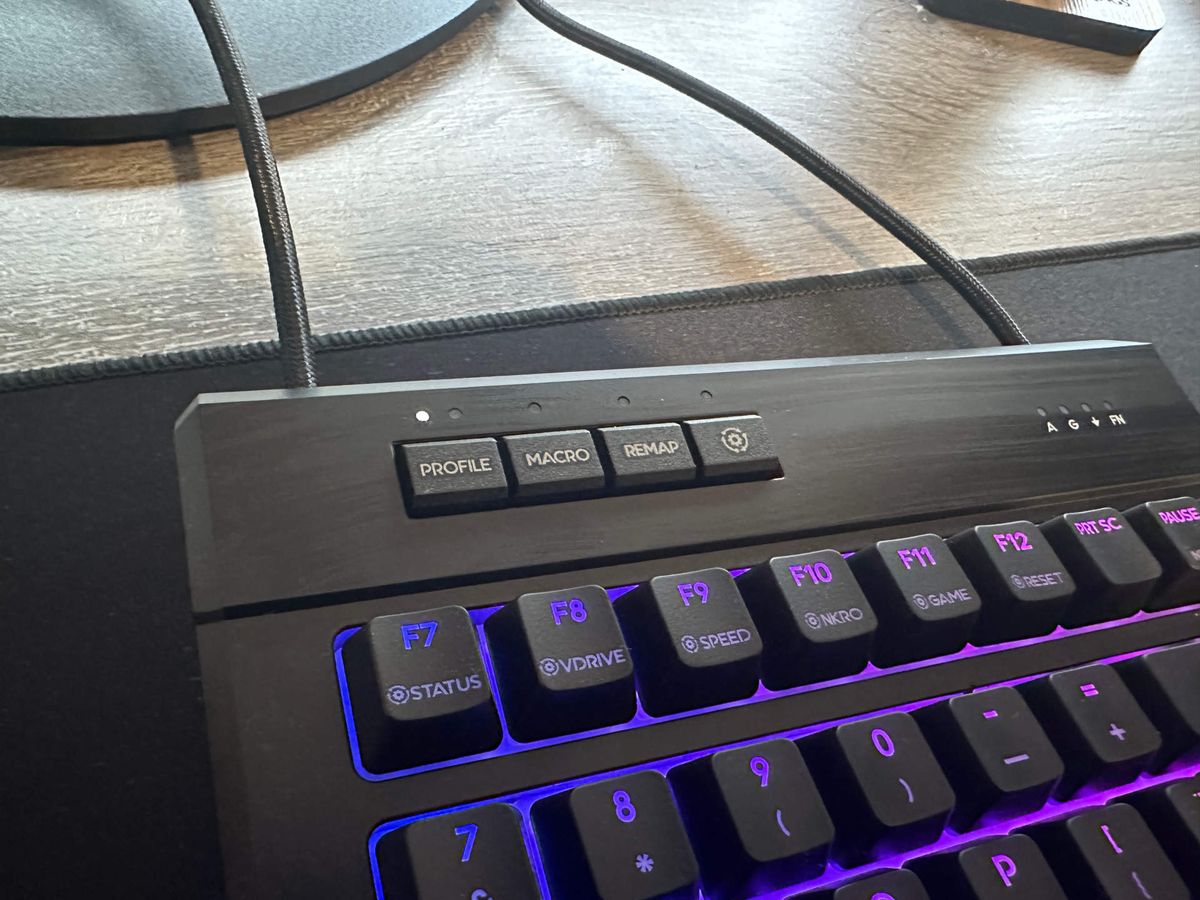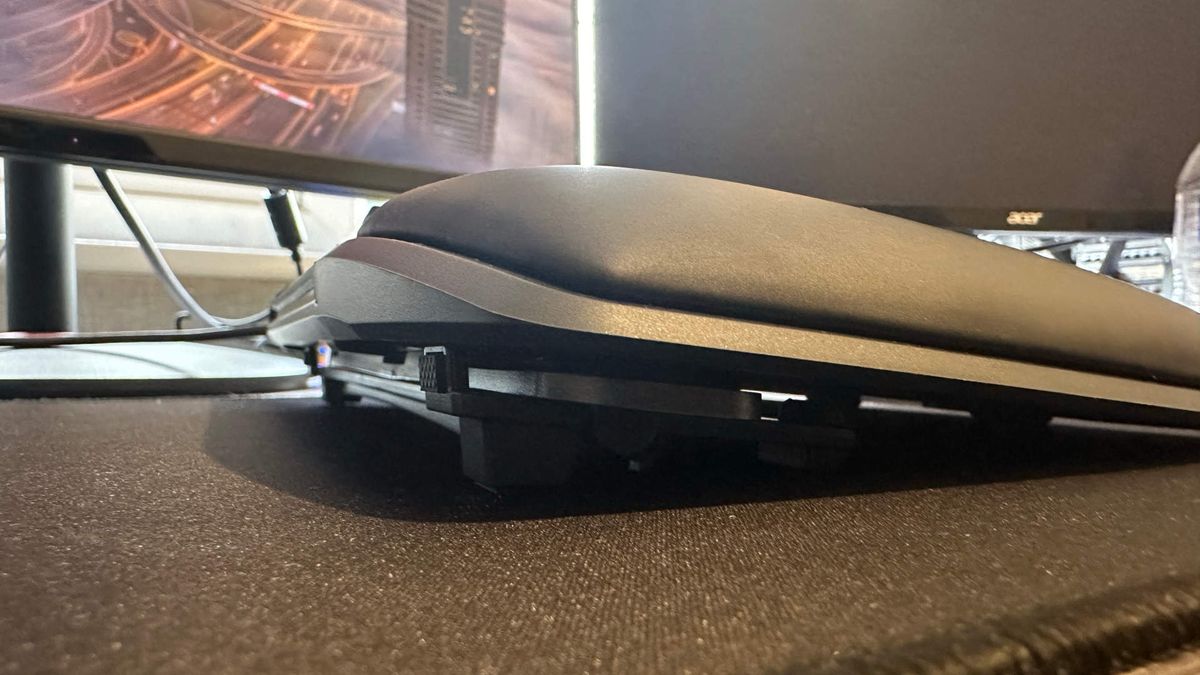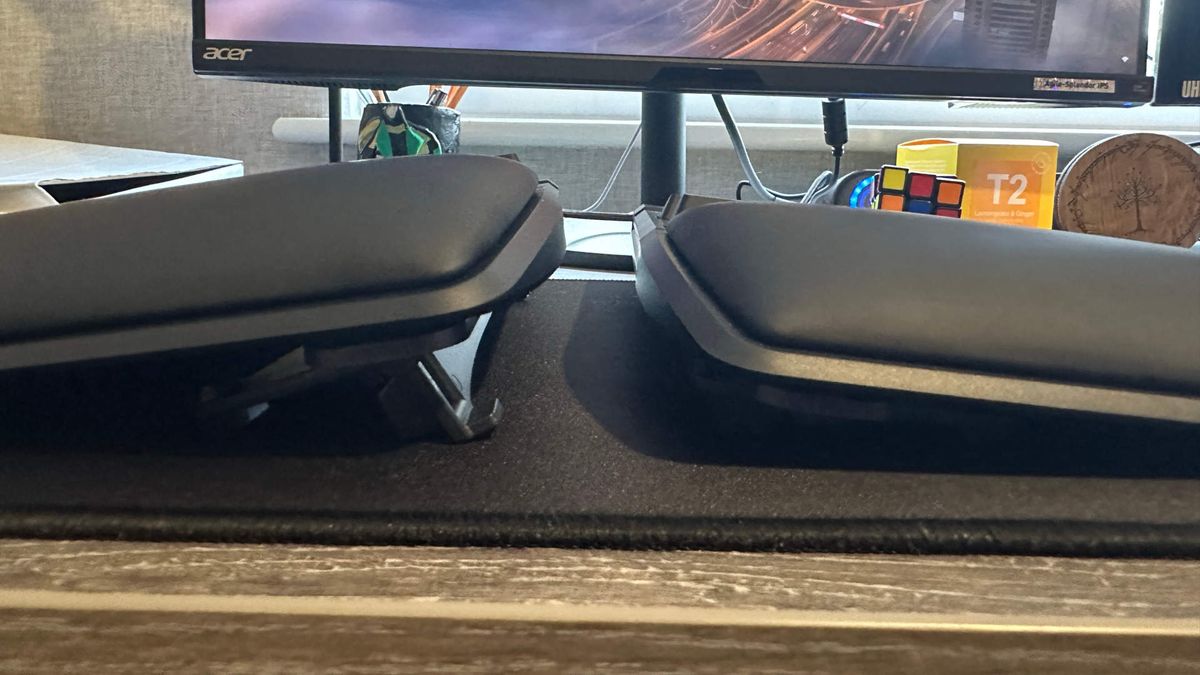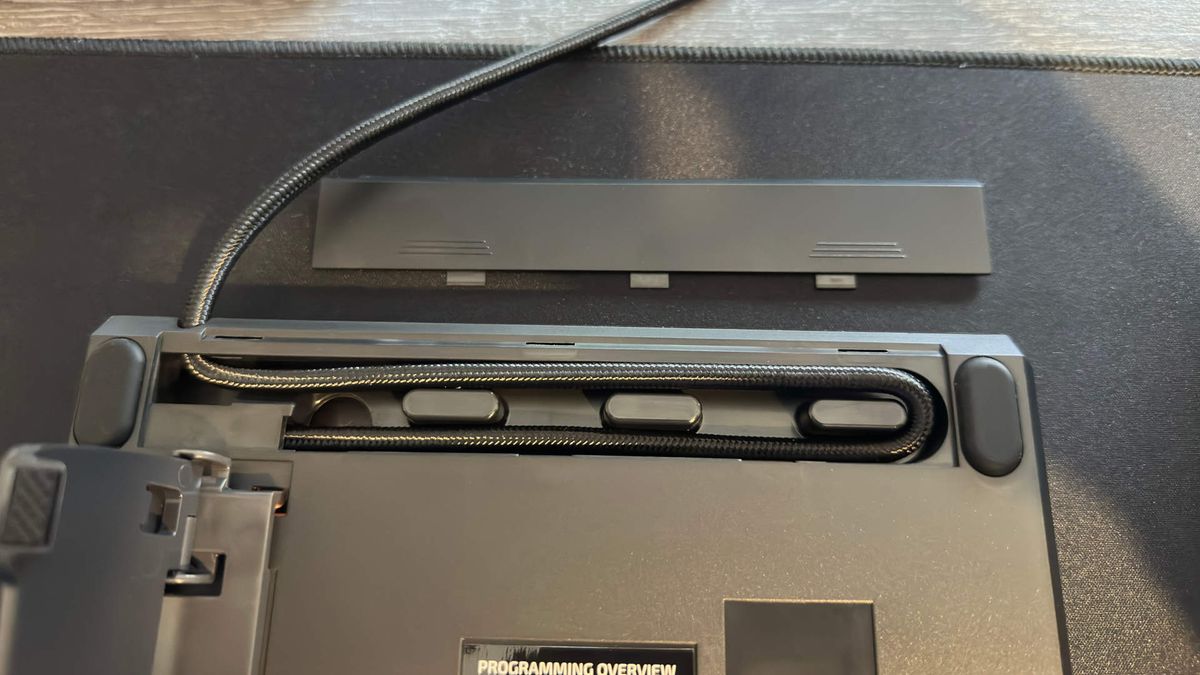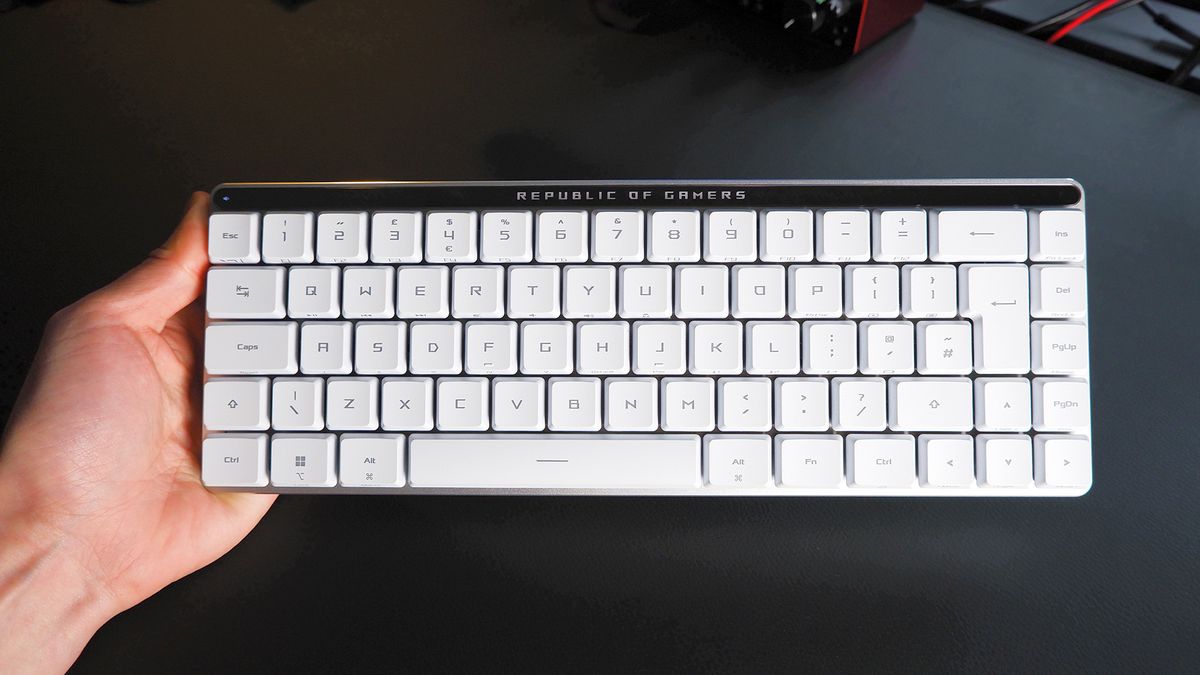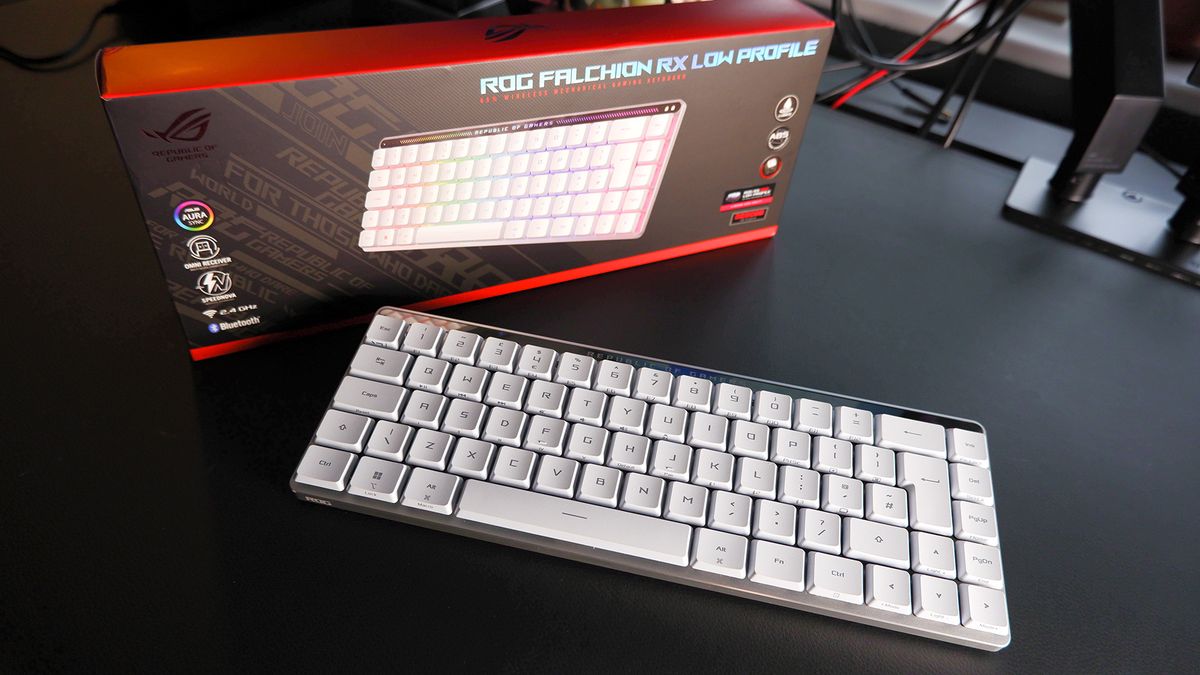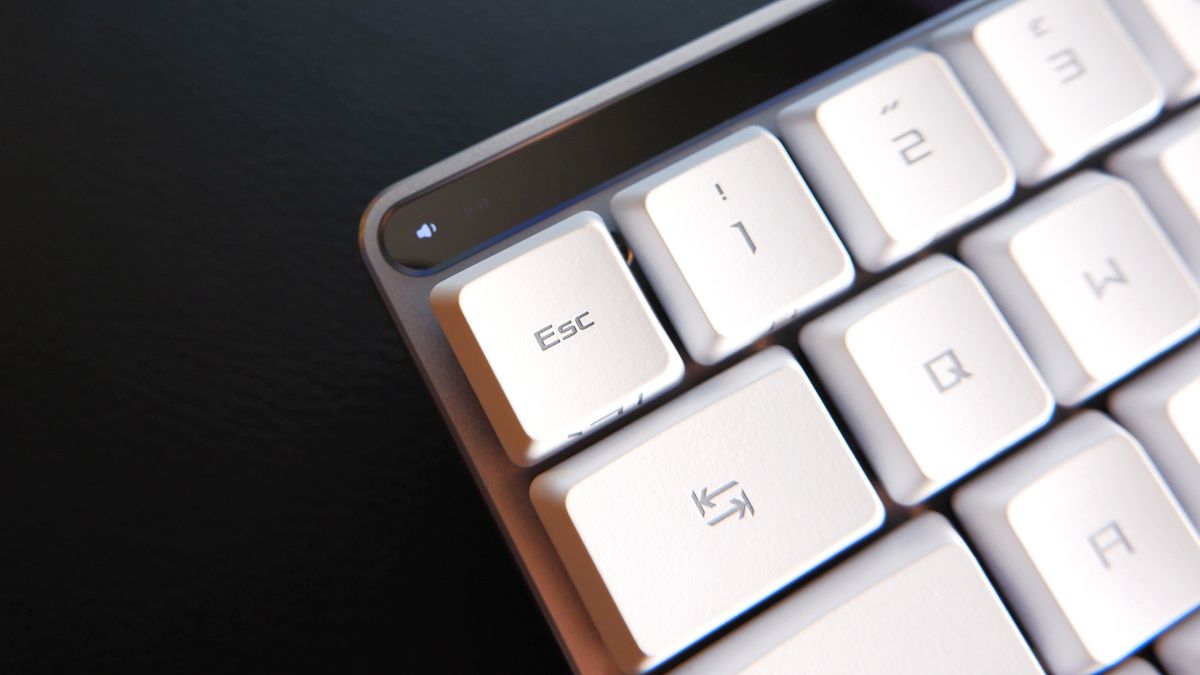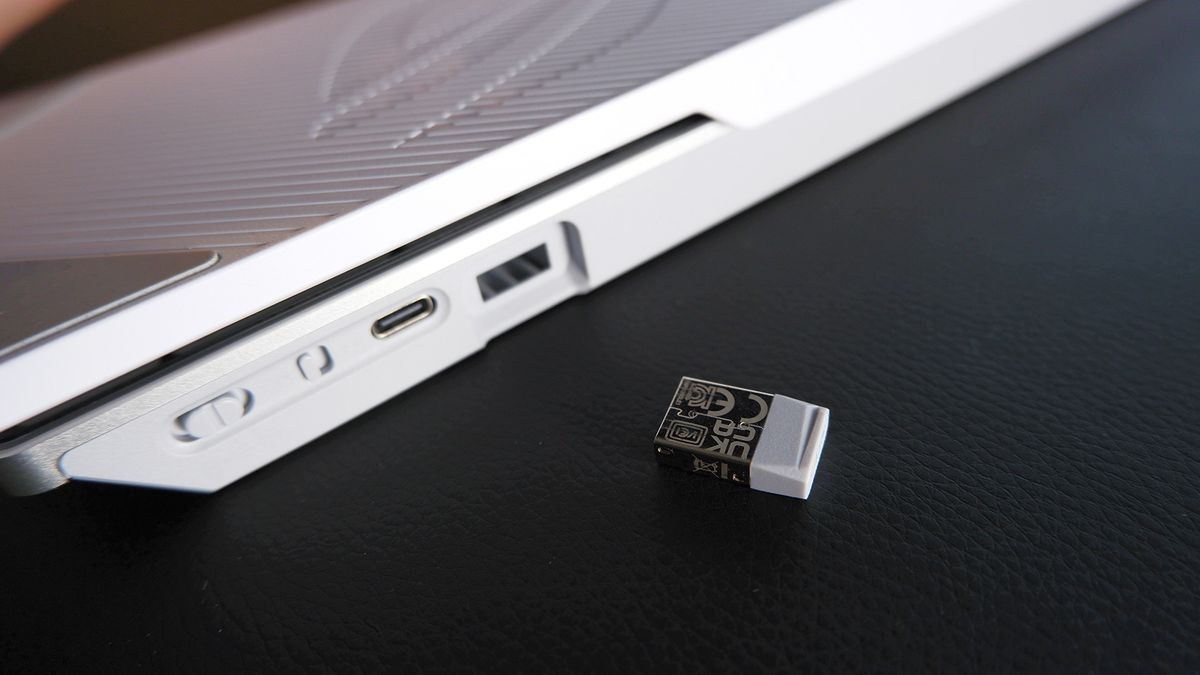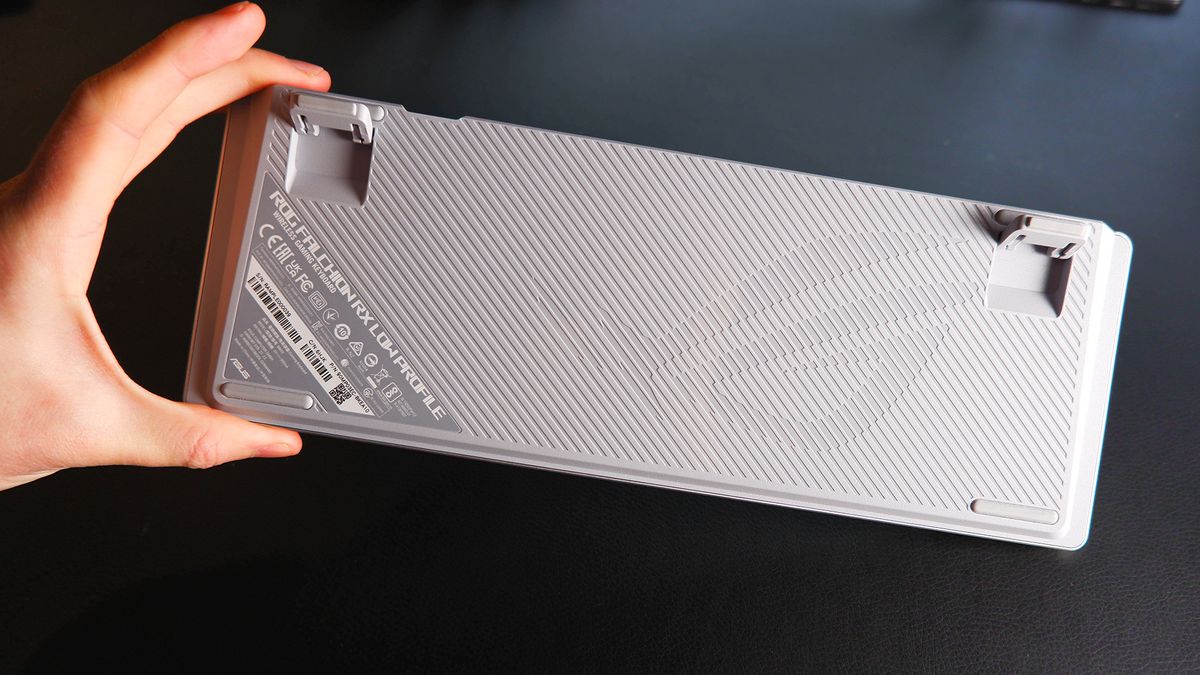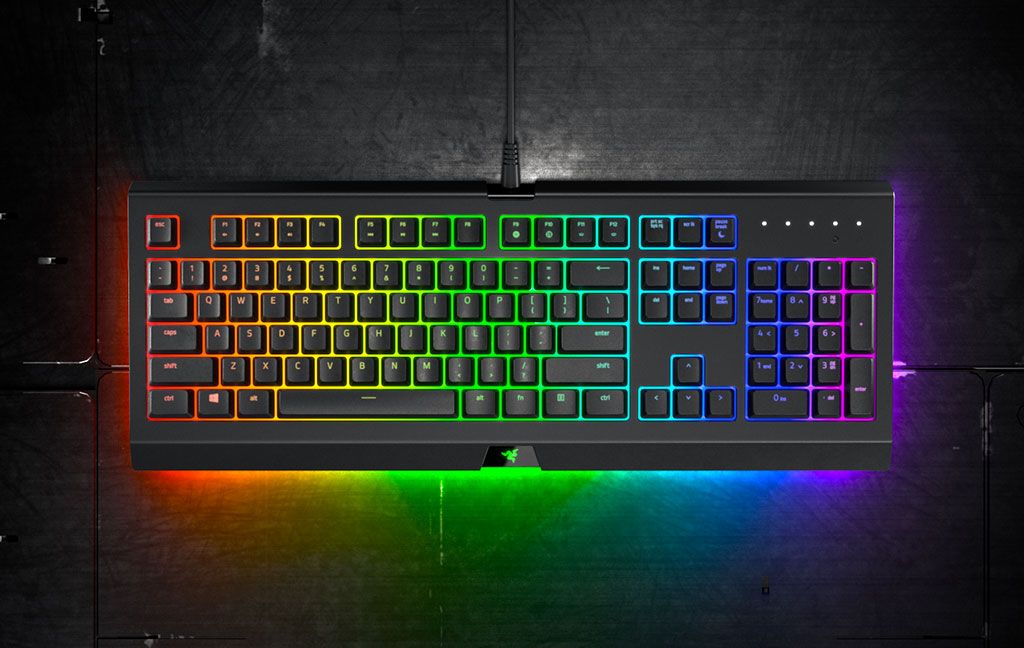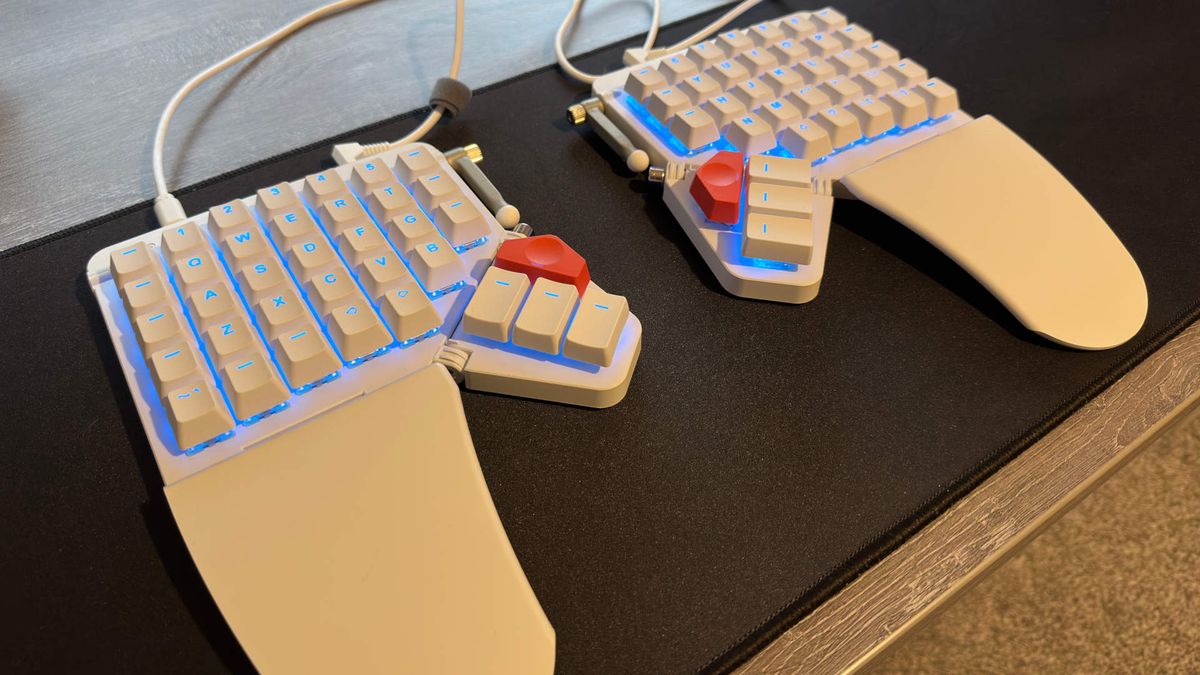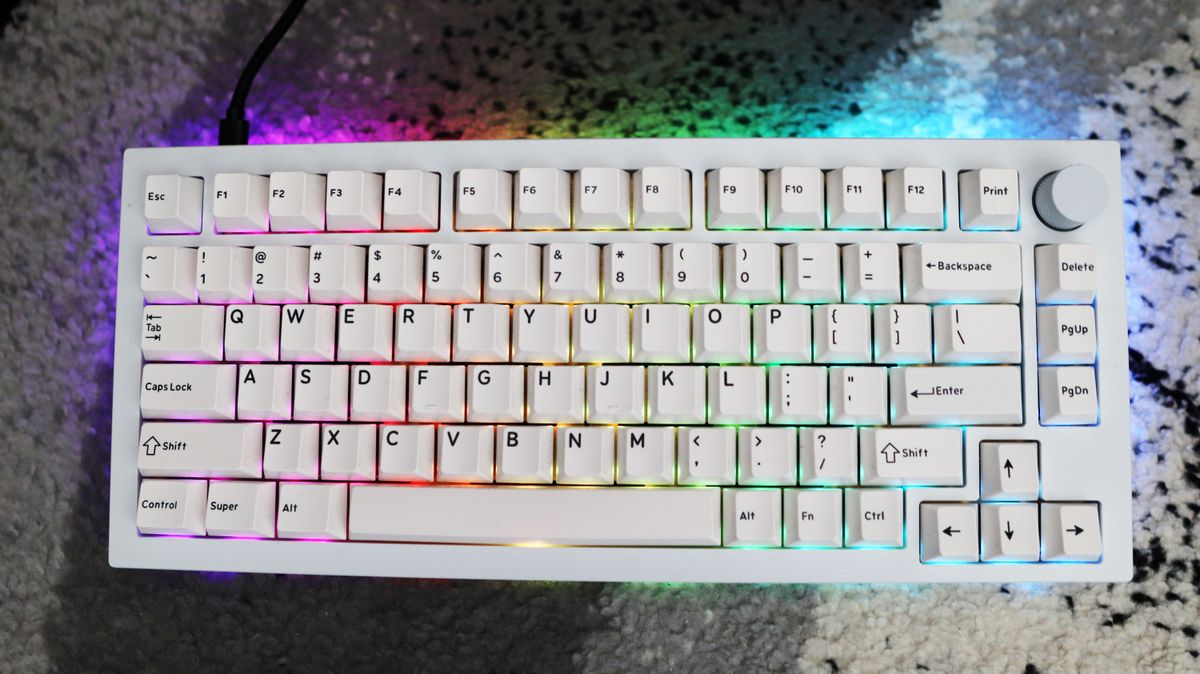Best gaming keyboards in 2024

When searching for the best gaming keyboard we keep an eye out for features, feel and value for money. Each of the gaming keyboards in this guide deliver on these three points, though we’ve focused on various price points to cater for any sort of budget.
The best gaming keyboard right now is the Asus ROG Strix Scope II 96 Wireless. It excels in every aspect—superb mechanical feel and a full-size yet compact design. But if you want to go for something cheaper, we’ve been absolutely blown away by the G.Skill KM250 RGB, which is easily the best budget gaming keyboard in 2024.
One vital aspect of any gaming keyboard purchase is whether to pick a mechanical keyboard. Generally, we’d say it’s always worthwhile considering a mechanical switch over a membrane one. They feel much better for typing and gaming and they’re generally quicker. Though nowadays we’re seeing more and more specialised switches, such as Hall effect, optical and even induction, which are becoming great picks for competitive gamers due to features like rapid trigger.

Jacob Ridley
There are few keyboard enthusiasts as enthusiastic as our Jacob. He’s been professionally testing for many years now, and has been collecting mechanical key switches like Smaug hoarded gold for years before that. Whether it’s Hall effect or straight mechanical, he’s poked and prodded more keyboards and switches than any one man should, and is our expert on all things keeb.
The quick list
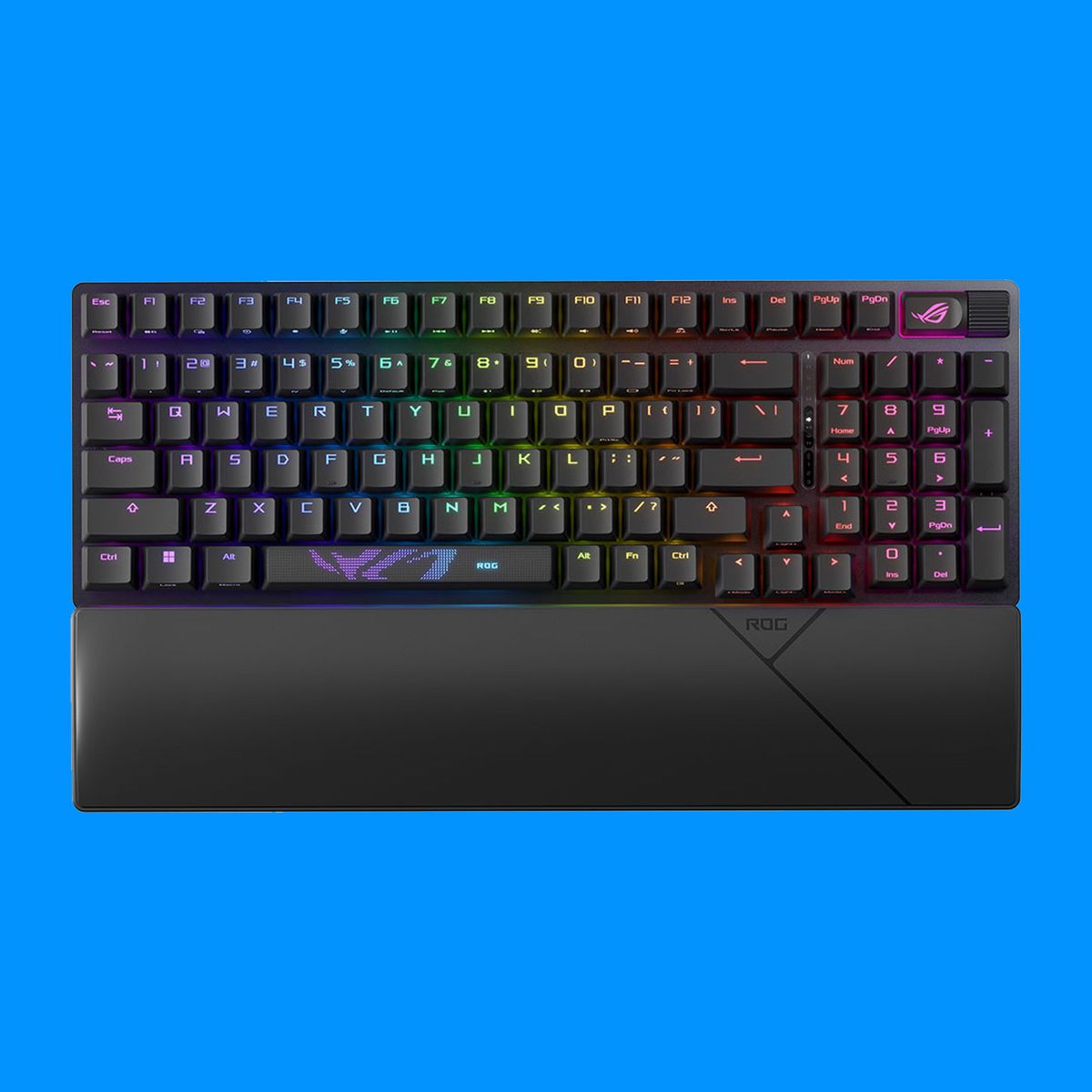 Best overall
Best overall
1. Asus ROG Strix Scope II 96 Wireless
The best overall
The Strix Scope II 96 may have a ridiculous name but it’s still a dream to game and type on. Silky smooth switches and clever media keys make this the best gaming keyboard right now.
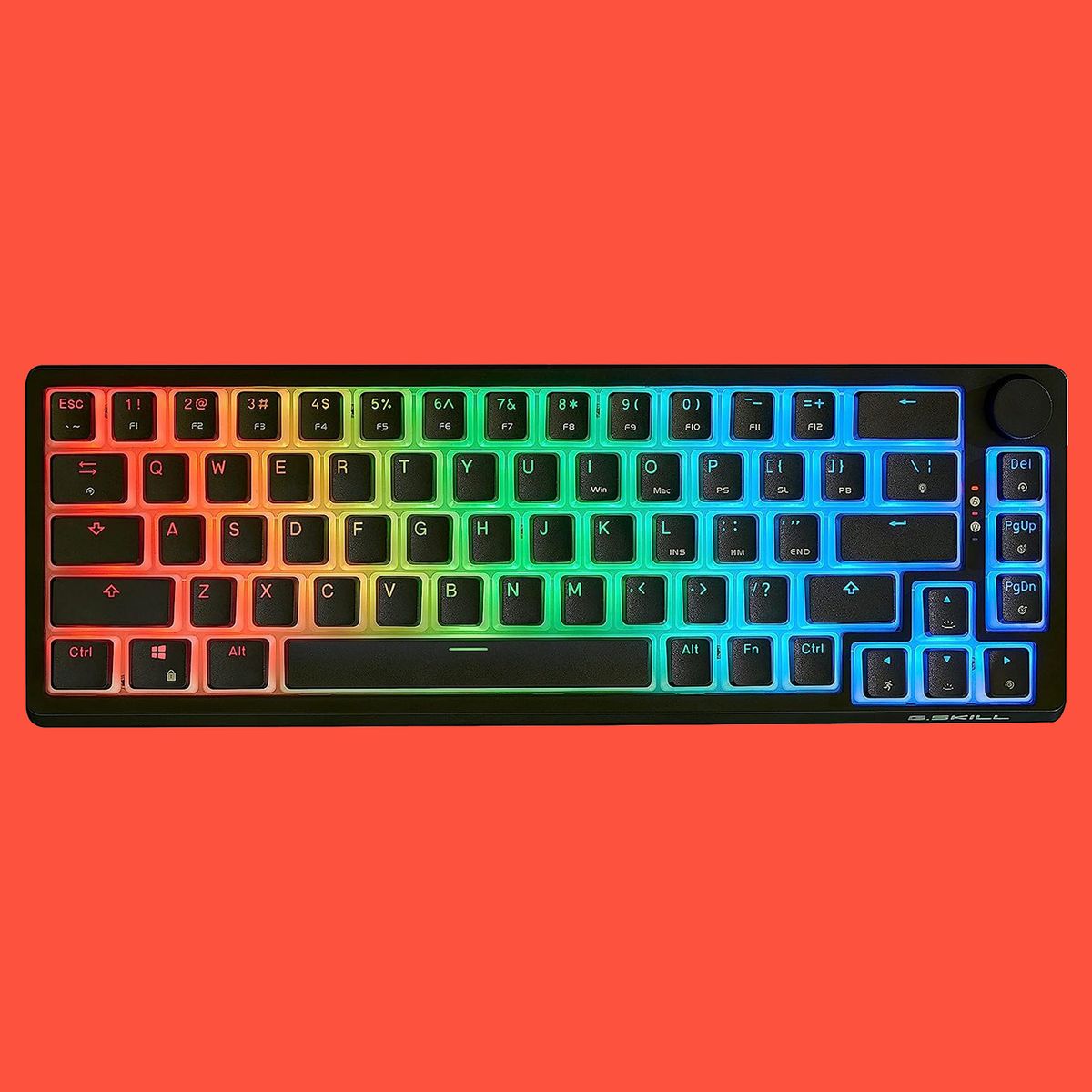 Best budget
Best budget
The best budget
The KM250 is an outstanding entry-level gaming keyboard, with the versatility to become almost an enthusiast typing board for less than the price of the cheapest barebones kit.
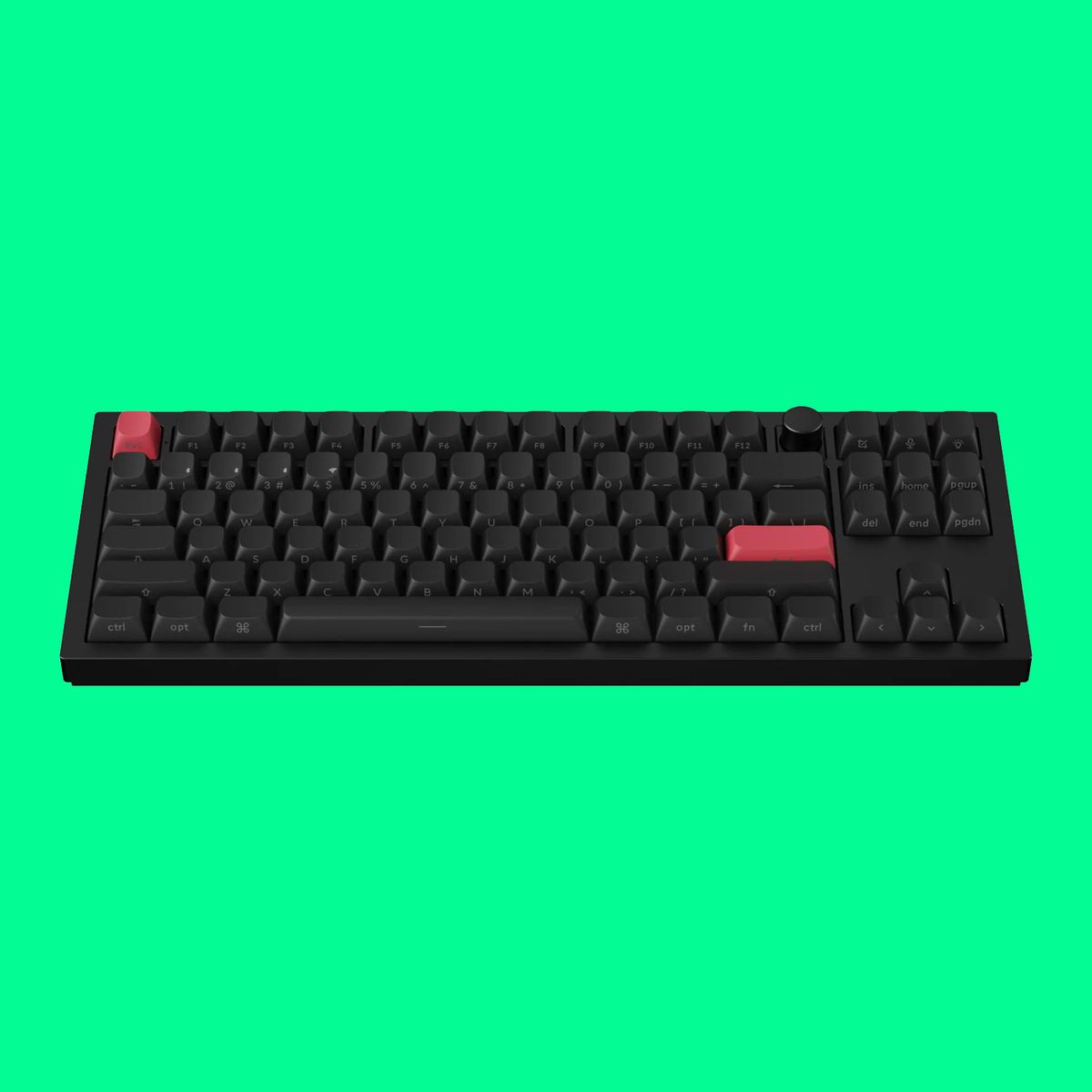 Best tenkeyless
Best tenkeyless
The best tenkeyless
With a superb build quality and delectable typing feel (seriously, that’s not hyperbole), the Keychron Q3 Max is easily the most drool-worthy tenkeyless (TKL) keyboard we’ve tested.
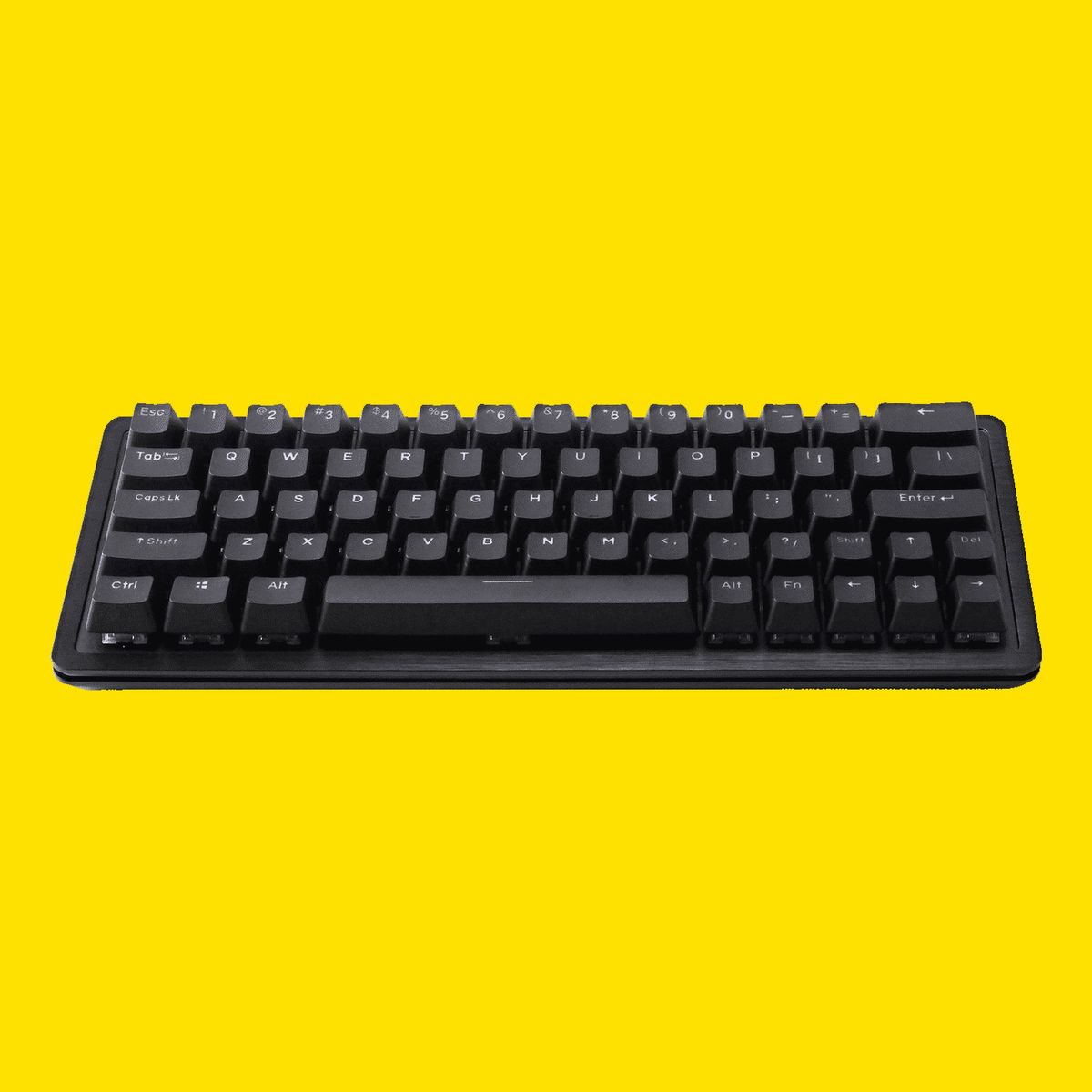 Best compact
Best compact
The best compact
Mountain has taken all it’s learnt from its first keyboards and created the best-feeling, most usable 60% gaming keyboard I’ve ever used. It’s solid, reliable, responsive, and offers the best typing experience around.
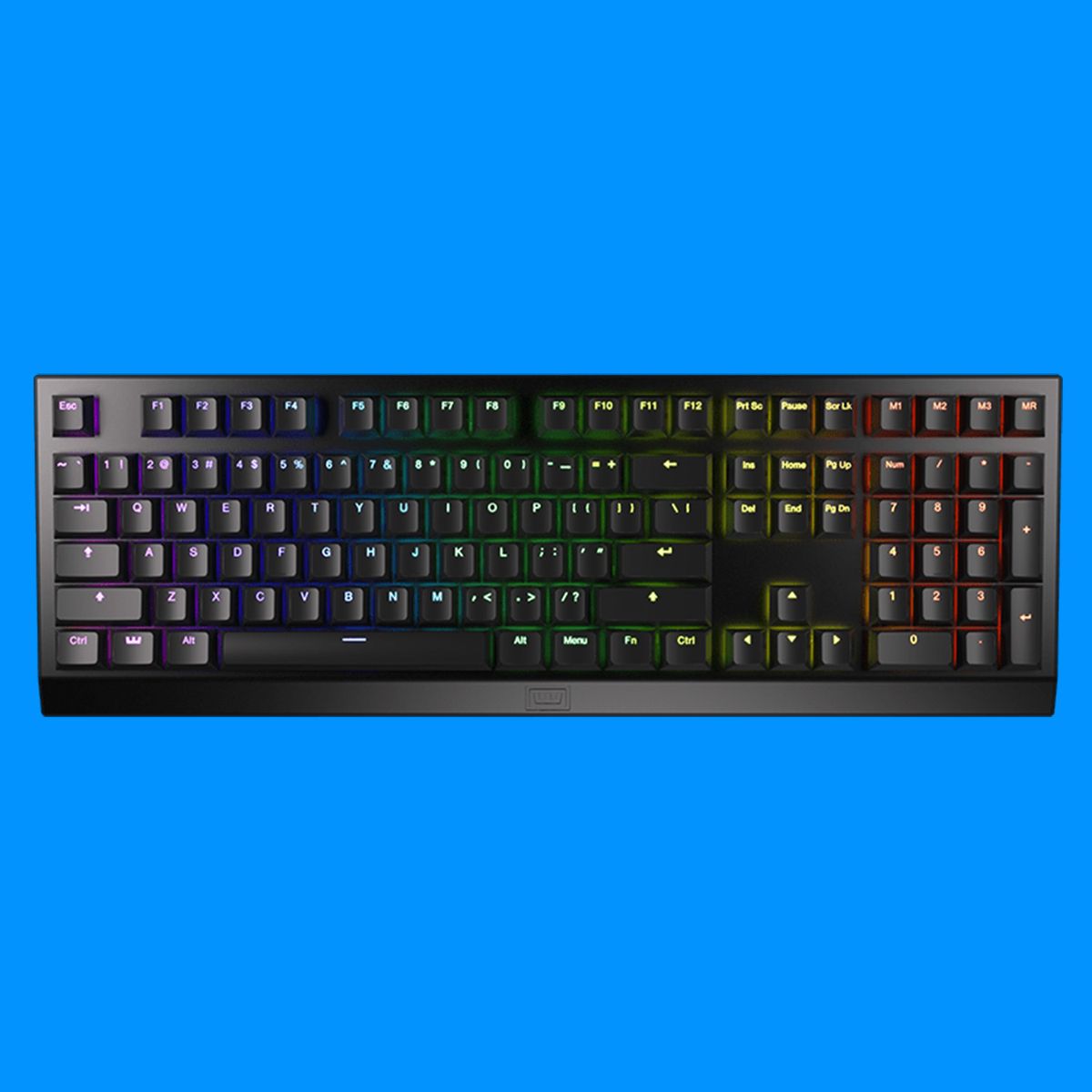 Best rapid trigger
Best rapid trigger
The best rapid trigger
The Wooting Two HE uses the magic of magnets to deliver a gaming keyboard like no other. There’s a whole bunch of flexibility here, a great app, and superb build quality. So yes, I’m absolutely a fan.
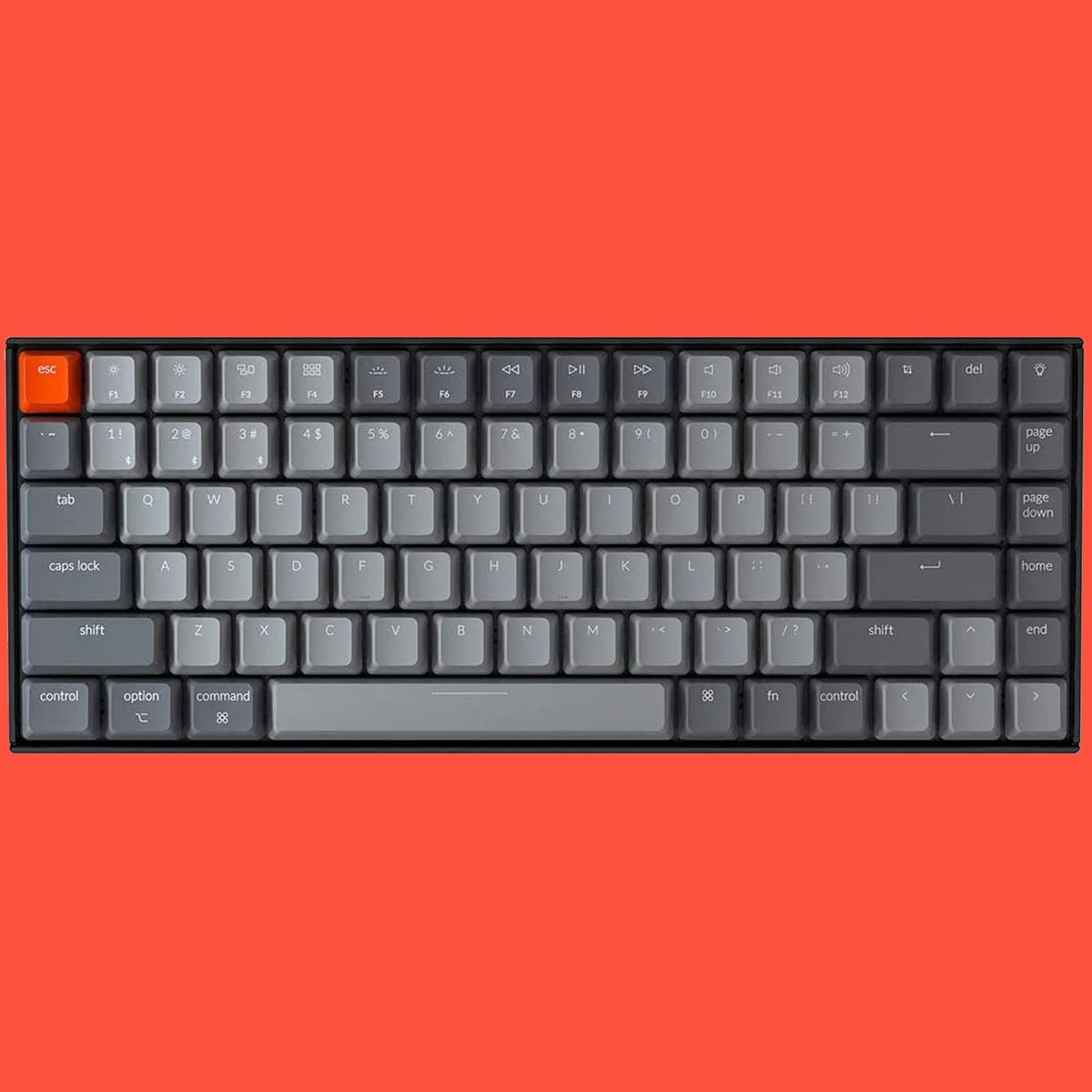 Best budget wireless
Best budget wireless
6. Keychron K2 (Version 2)
The best budget wireless
A handy entry-level mechanical board with a good build and set of features. The Keychron manages to deliver wireless connectivity for a fraction of the price of most others.
⬇️ Click to load more of the best gaming keyboards ⬇️
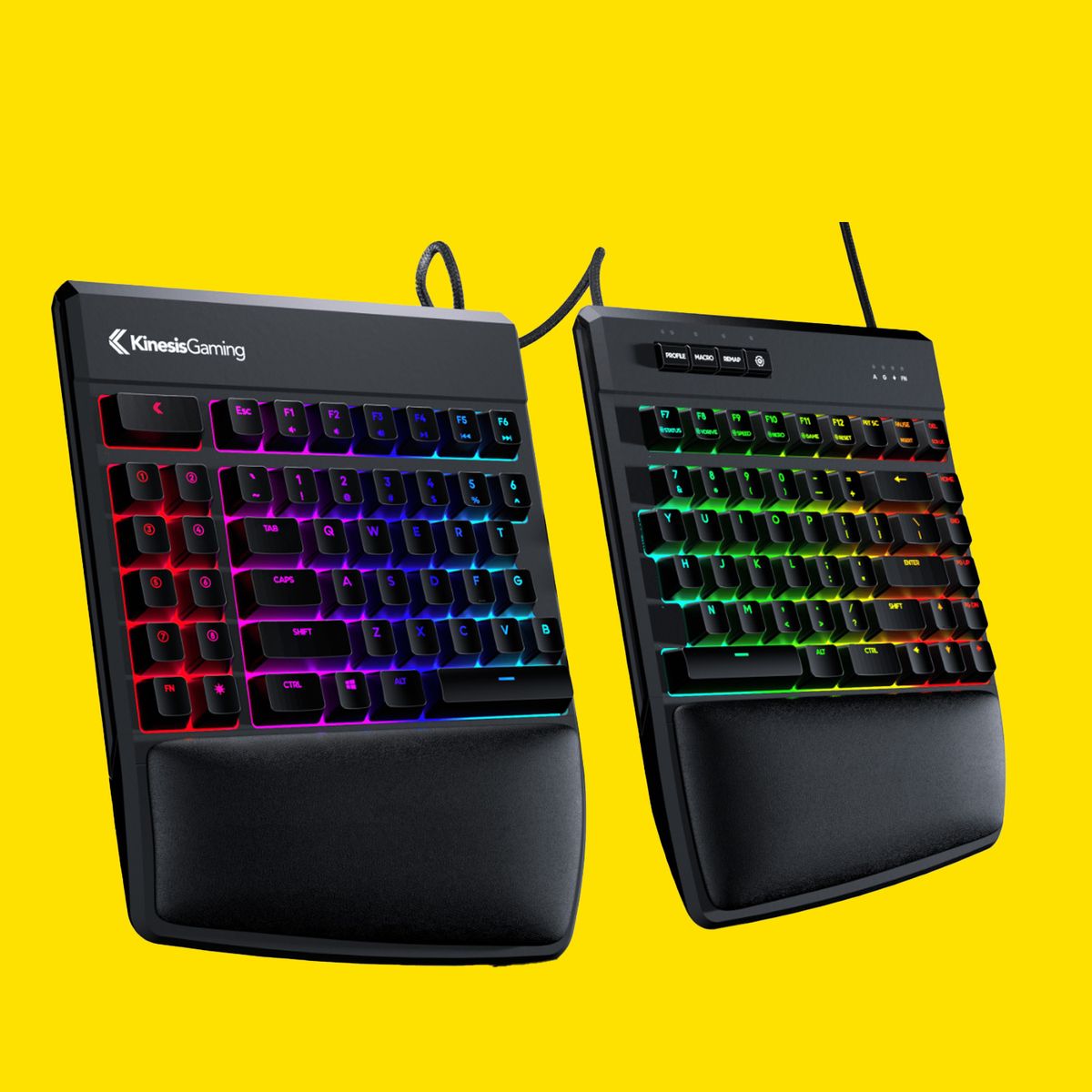 Best ergo
Best ergo
7. Kinesis Freestyle Edge RGB
The best ergonomic
If you want to prioritise your health and posture while typing, you’d better opt for an ergo board. Luckily, that doesn’t mean sacrificing any important gaming features, thanks to the Kinesis Freestyle Edge RGB’s blend of both.
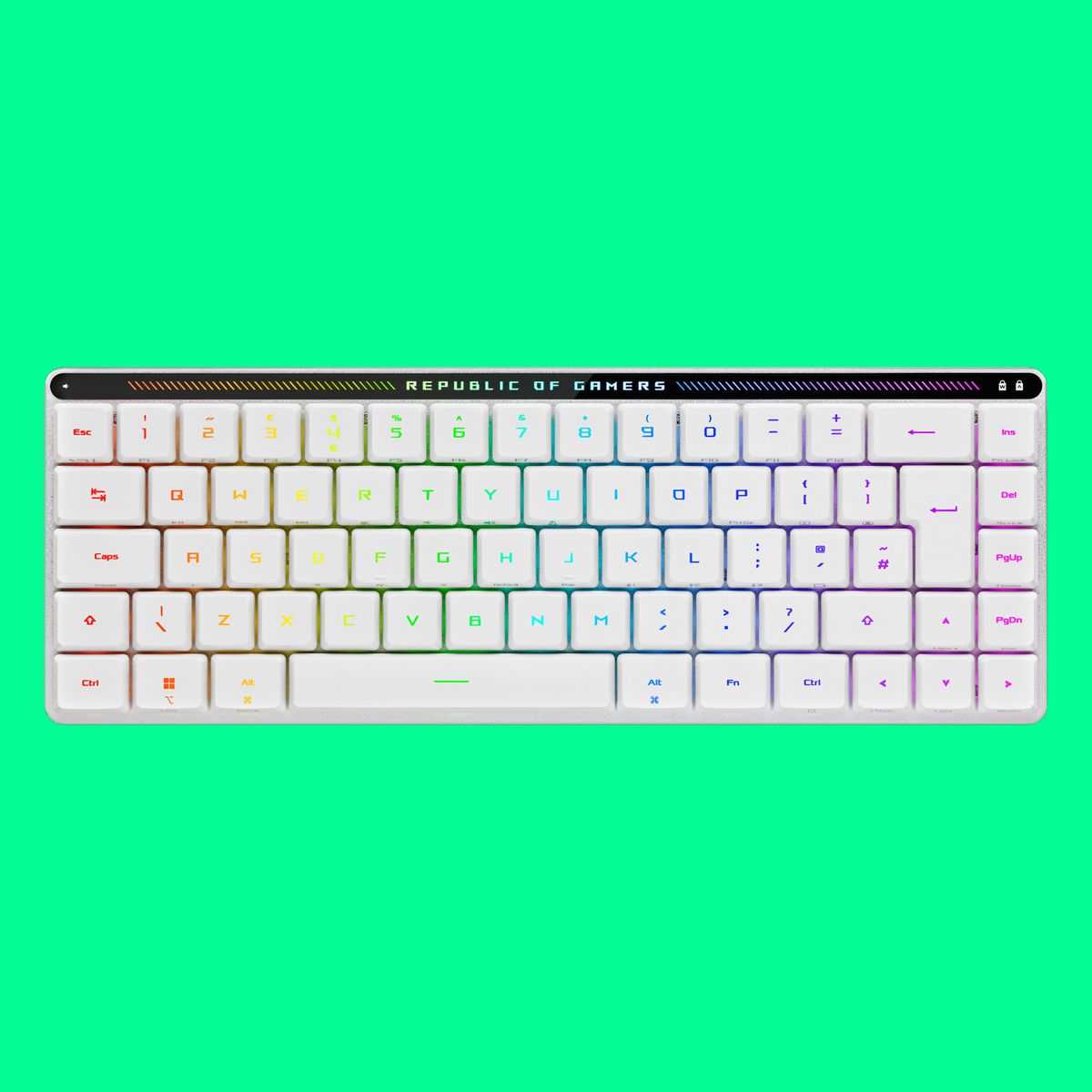 Best low-profile
Best low-profile
8. Asus ROG Falchion RX Low Profile
The best low profile
A snappy and responsive compact keyboard, the ROG Falchion RX Low Profile comes with lovely lubed switches to make gaming and typing a joy.
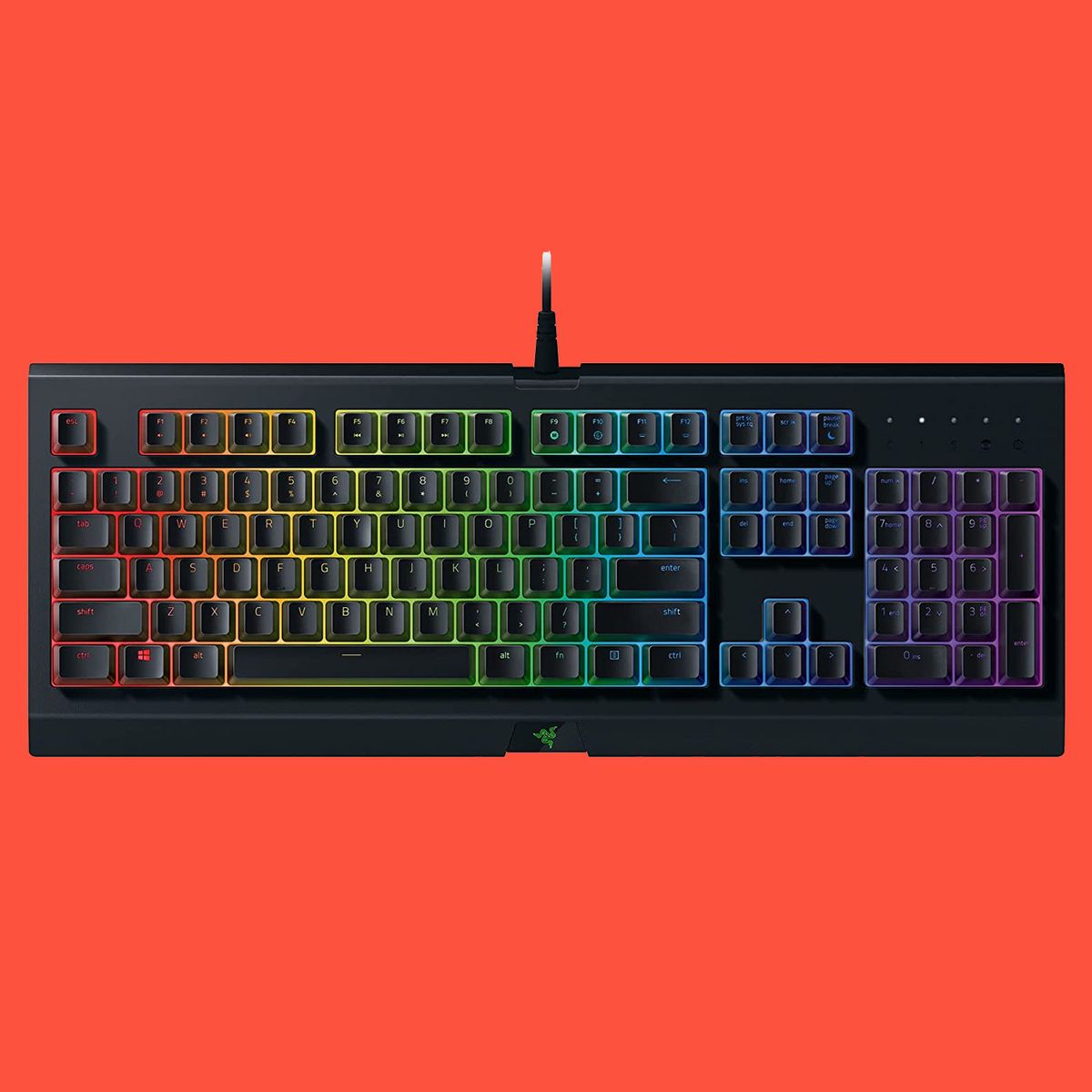 Best membrane
Best membrane
The best membrane
If instead of a mechanical board you prefer the squishy flaoom of a membrane, this is for you. It’s a solid, no-frills, nice-looking keyboard that’s the best membrane option we’ve tested.
The best gaming keyboard
Buy if…
✅ You want the smoothest typing experience: With lubed switches out of the box you don’t need to waste any energy with a pot of lube and a paint brush in order to get an immaculate typing experience.
✅ You want the best generalist gaming keyboard: You can find faster keyboards, and definitely flashier ones, but the ROG Strix Scope II 96 is by far the best generalist board and excels at a lot.
Don’t buy if…
❌ You want speed or analog features: As fast as most other mechanical keyboards, nowadays you can find faster keyboards than this using Hall effect or optical switches.
The best gaming keyboard is the Asus ROG Strix Scope II 96 Wireless. It’s rare that a keyboard is such an all-round joy to use as this is. There are faster, smarter, even cheaper boards—you’ll find all of those recommendations below—but the Strix Scope II 96 Wireless brings together many of the features we’re looking for in a modern gaming keyboard.
Firstly, some of the smoothest mechanical switches in the biz. You can pick between ROG-branded NX Snow or NX Storm switches in this board. I’ve been using the Snow switches, which are your regular linear dealio with an actuation force of 45g, though the Storm switches are a moderately heavier tactile option. These switches alone aren’t anything special, but a little lube goes a long way.
A drop of lube on every mechanical key switch makes a surprising amount of difference to the typing experience. Each key press is smooth, consistent, and every thwack produces a glorious clack. This lube is already pre-applied to each switch, which saves you the hassle of opening each one and applying it yourself. We’ve done that before and it can get messy.
Both of the available switches actuate at 1.8mm, which is pretty snappy, though not quite as snappy as the Corsair K70 Max at its lowest adjustable actuation point of 0.4mm. Similarly, the Strix Scope’s polling rate is a mere 1000Hz—slower than the K70 Max at 8000Hz. Not that I noticed that in-game—the Scope II 96 feels extremely responsive.
It’s also relatively quiet. The sound of the linear switches reduced to a light pitter-patter by the sound dampening foam, sturdy PBT plastic keycaps, and switch pads. Lubed up, sturdy stabilisers also keep the larger keys, namely the spacebar, quiet.
You are able to swap out any of the NX Snow switches on this keyboard for keys of your choosing. However, if you don’t replace them with lubed switches I will personally hunt you down. Don’t do the Scope II dirty like that.
The Scope II 96 is nearly a full-size board—it importantly retains a full numpad—though it’s been squished down into a more compact chassis. As a result, the delete key is further away from your pinky than normal. It takes some getting used to, but I’ve been tapping away on it for a couple of weeks now and I feel I’ve got typing on the Scope II 96 down to a fine art.
Still, it’s been a long time since I’ve been blown away by a gaming keyboard—so many seemed carbon copies of what Corsair did 10 years ago—but the Scope II 96 is mighty impressive. It focuses on nailing the actual mechanics of a mechanical gaming keyboard. Importantly, it’s also great for gaming and doesn’t cost anywhere near as much as its smaller, more premium sibling, the ROG Azoth.
Read our full Asus ROG Strix Scope II 96 Wireless review.
The best budget gaming keyboard
Buy if…
✅ You’re looking for the best on a tight budget: With features galore and many unexpected additions for this sort of price tag, we’ve not seen anything better for less.
Don’t buy if…
❌ You want the best typing experience out of the box: Without some of the more high-end materials in used in the casing of this keyboard, the typing experience can be a little hollow.
Mechanical gaming keyboards can cost a fortune. The G.Skill KM250 RGB’s best skill is that it doesn’t. That’s why it is our pick for the best budget gaming keyboard in 2024. It’s nowhere close to costing a fortune, yet it still offers mechanical switches, per-key RGB, hot-swappable keys, and discrete media controls.
The G.Skill KM250 redefines what it means to be a budget gaming keyboard. Features that were once enthusiast only are right here, for just $40. During a time when PC peripheral prices generally appear to only be increasing, that’s important.
If you’re after a good compact board you honestly don’t need more than what’s being offered here. A simple and small frame with Kailh linear mechanical switches, it’s a no-nonsense design if ever there was one. Though you’ll be pleased to know that it retains one fan-favorite feature: per-key RGB backlighting.
If you prefer you can jam in some higher-end switches and create a lovely little semi-custom build inside the G.Skill KM250 chassis. It is obviously lacking the high-end luxury of sound dampening and super-fancy stabilisers, but those are compromises I’m willing to make for such a supremely cheap keyboard. And honestly, I’ve experienced far worse stabilisers on expensive NZXT and Razer keyboards in the past.
The included Kailh switches are not bad, but definitely not great and, combined with the plastic chassis you do end up with quite a hollow-sounding typing experience.
But, having changed out the linear Kailh Red switches for a set of Halo True heavy tactile switches, the difference in the sound is clear. It’s not the ultra rich-sounding experience of using the Mountain Everest 60 or Asus ROG Azoth, but it now feels great to type on, dampening or no. It’s also at most half the price if you include fancy new switches, and if you’ve got a headset on you’d be hard pressed to feel the difference.
The board layout itself is pretty standard 65%, which makes for a few more useful keys than a 60%. There’s a little bit of spacing between the bulk of the keys and the cursors, and you also get separate Del, PgUp, and PgDn buttons, too. A neat selection.
And a discrete volume wheel. I love a physical, tactile volume control, and it’s a genuinely lovely little extra I wouldn’t have expected on such an affordable board. It’s not just volume up and down, as there’s a click down to it which will mute or unmute your audio as well.
I’m honestly genuinely impressed with the package as a whole, and if you want a proper mechanical keyboard experience without paying enthusiast money, the G.Skill KM250 is an outstanding option.
Read our full G.Skill KM250 RGB review.
The best tenkeyless gaming keyboard
Buy if…
✅ You want the complete package: I’ve tried many tenkeyless keyboards over the years, and none get so much right like the Keychron Q3 Max.
Don’t buy if…
❌ You are looking for affordable excellence: The Q3 Max delivers excellence, but it’s far from affordable.
A delightful typing experience wrapped in a weighty block of aluminum, the best tenkeyless gaming keyboard has to be the Keychron Q3 Max.
Don’t be fooled into thinking the tenkeyless (TKL) gaming keyboard market isn’t as competitive as the full-size one. It absolutely is. We’ve tested heaps of excellent TKL boards over the past few months alone, such as the Razer Huntsman V3 Pro TKL and ROG Azoth—two fantastic keyboards from big names in the industry. and still we’ve come away most impressed by the Q3 Max.
Keychron isn’t a household name, though with more boards like this, and the K2 below, it’s going to make one helluva name for itself.
The Q3 Max is crafted out of a piece of thick, machined aluminum. It weighs a whopping 2.045 kg as a result. Don’t be put off by that, however. We often find heavier keyboards are sturdier and offer a much improved typing experience over lighter, flimsier boards.
That’s the case here. The Q3 Max is a dream to type on. The many layers making up its construction include sound dampening foam, film, a latex pad and more foam. This produces a steady and consistent typing experience that’s on another level next to some.
And the sound of it. The Q3 Max sounds divine.
One of the key benefits of a TKL keyboard is that it takes up less room than a full-size keeb. That means lopping off the numpad, hence the name, and usually losing other extraneous features, such as dedicated media keys. However, we’ve seen a growing trend for keyboard manufacturers of stuffing some sort of media controls elsewhere, and that’s exactly what Keychron has done here.
The Q3 Max comes with a knob, otherwise known as a dial, which offers volume up/down, or zoom in/out, or brightness up/down, or a whole lot more. It’s whatever you want it to be, within reason, and changeable via the open source QMK firmware keymap tool, Launcher. Launcher is available to use via a browser, which is pretty neat.
Each key on the Q3 Max is fitted with an RGB backlight, which is also controllable via that same dial and the onboard shortcut keys. There are three switches to choose from: Gateron Jupiter Red, Brown and Banana. All three come pre-lubed, which means like the ROG Strix Scope II 96, they’re slick to type on.
With wireless functionality across 2.4 GHz via a provided dongle and Bluetooth, or a wired USB Type-C connection, you have a pick of options for connectivity. The battery is a good 180 hours on paper with the backlight disabled, or 100 hours with it on, and in practice we rarely had to reach for the USB cable to charge the Q3 Max.
Though it does cost a fair chunk of cash, which is to be somewhat expected, but doesn’t make it sting any less. At least you can be sure you’re getting your money’s worth. A simply fantastic TKL gaming keyboard and office hero, this really is the complete package.
Read our Keychron Q3 Max review.
4. The best compact gaming keyboard
Buy if…
✅ You have a small desk: You can save heaps of room by trimming down your gaming keyboard. More room to flick your mice around or just fill with figurines.
Don’t buy if…
❌ You’re stuck in your ways: It might seem silly but compact keyboards often require learning new typing tricks to do everything you’re used to. If you’re an old dog and don’t want to learn new tricks, stick to a full-size or near full-size board.
The Mountain Everest 60 is the best compact gaming keyboard and cute as hell. It has all the enthusiast keyboard extras you could want, but crucially has the total utility to be your daily driver of a keeb.
Mountain isn’t the first to create modular keyboards—Asus even made its own years back—but it’s the first to get it right. Offering a solid, secure fit for the modular components, as well as multiple mounting options, makes the whole setup actually useful and not just some marketing gimmick. On its own, though, the Everest 60 isn’t modular, but there is a dedicated numpad that can be purchased separately, and it’s hot-swappable. Crucially, for me, it will also attach to either side of the board.
If you’re still rocking a numpad on the right-hand side of your gaming keyboard then you’re just plain doing it wrong. The key benefit of a smaller keeb is that your mouse and WSAD hands are closer together, and switching the numpad to the left means you still get to use the extra buttons and the extra desktop real estate for your gaming rodent.
The tiny right shift key does take some getting used to, but the addition of the cursor keys makes a huge difference to the overall utility of the Everest 60. But that’s not the only reason I’ve fallen in love with the board, however: this thing just oozes quality.
It’s easily the best typing experience I’ve had, and all from a compact design I’m usually not that fussed on.
The base of the keyboard has a layer of silicone inside it, to add weight and dampen the sound, but then there are also two layers of foam, on either side of the PCB, to again improve the aural experience. Mountain has used genuine Cherry stabilisers on the board, too, but has made sure they’re fitted and lubed properly for the Everest 60 to ensure there’s no rattle on even the broad spacebar.
And I’m impressed with the Mountain mechanical keyboard switches the company is shipping inside the Everest 60 for the first time. Mountain is also selling them separately, in Tactile 55 (denoting the 55cN force needed for actuation), Linear 45, and Linear 45 Speed (which have a shorter travel and actuation point). I’ve been using the Tactile 55 in my sample, and they feel great. Really stable, responsive, and factory lubed so there’s none of the grittiness you can sometimes get from a tactile switch.
All this good keeb stuff does come at a price, however. And the numpad accessory is extra. There are some bundles packaging the two together, and ones that include the colourful new PBT keycap range, which can make it a bit cheaper. But not by much.
Read our full Mountain Everest 60 review.
The best rapid trigger gaming keyboard
Buy if…
✅ You want to heavily customise your keeb: There’s no shortage of customisation options on the Wooting. From actuation points to double-function key presses, it’s all changeable in the excellent app.
Don’t buy if…
❌ You want the best mechanical feel: The Wooting’s Lekker switches are lovely, but you can find smoother switches elsewhere.
The Wooting Two HE is the best rapid trigger gaming keyboard. What the heck does that mean? It means this keyboard employs Hall effect switches to its benefit in competitive games. By measuring when a user releases a key and ‘resetting’ it faster than would be possible on a standard mechanical switch, this keyboard can improve a user’s response time in games like Valorant and Counter Strike.
You need to know how a traditional mechanical switch works before you can truly appreciate rapid trigger.
Take a Cherry MX Red switch, for example. This will require a set amount of travel (2 mm) and a set actuation force (45 cN) to hit the operating position. This is when the switch’s metal contacts meet one another and a signal is sent through the keyboard to your PC and a key press is registered. After which, the switch travels back up and hits a reset point just about the operating position. None of this can be changed as it’s based on the mechanical parts within the switch. You could, however, buy different mechanical switches for a different mix of actuation force, travel and reset.
A Hall effect switch is different. There’s a magnet within the stem of every Lekker switch, and by measuring the magnetic force of that magnet as it moves, through a Hall effect sensor on the keyboard’s PCB, the Wooting Two HE is able to accurately track the full depression and return of the mechanical switch. Since this isn’t predetermined by the switch itself, a user is able to adjust the operating position and reset point accordingly in a keyboard’s firmware.
Other switch types are able to do this, too, including optical and induction. Though right now, we feel Wooting does it best.
Rapid trigger is a feature that intuitively changes the reset point based on each key press. So, when you press a key, the reset point is always engaged the moment you release it. This means you can then depress the key again without having to fully release it each time.
For competitive games, that extra time saved on every key press can be pretty important.
The Wooting Two HE also offers fully-analog controls on each key, which used to be its headline feature before rapid trigger took off in the world of esports. Other cool features include dual actuation and easily adjustable typing and gaming modes.

Wooting generally does a great job of living up to expectations in other ways, too. The keyboard is solid, well-built, and comes with a two-year warranty. If a switch breaks, you can swap it out, as the board is hot-swappable. That’s one benefit of there not really being all that many mechanical moving parts with a magnetic Lekker switch, and another is that there’s less to break in the first place.
That’s what I’ve loved about every Wooting keyboard I’ve looked at so far, and no more so than the Wooting Two HE: they’re not built on a great concept; they deliver it. Even if you think you’re sold on the analog movement of the Wooting, and it can be limited in scope depending on your preferred games and genres, there are many other great reasons to love it beyond that.
Read our full Wooting Two HE review.
The best budget wireless gaming keyboard
Buy if…
✅ You must have a cable-free connection: You don’t actually have to spend loads to ditch wires on the desktop. This keyboard is proof of that.
Don’t buy if…
❌ You want RGB lighting: You won’t find anything more than white LEDs here, so don’t even think about rainbow puke presets.
The best budget wireless gaming keyboard comes from a brand you might not be overly familiar with. The Keychron K2 has all the makings of a decent little wireless mechanical keyboard, however, and it’s wonderfully affordable.
The Keychron K2 has marked itself out as a marvellous entry-level keyboard that can act as a gateway into the wider world of mechanicals. Its a simple mechanical keyboard in a 75% format—that’s less keys than a full-size board but isn’t quite as tough to get to grips with as a 60%.
For more of an affordable board, the build quality is surprisingly sturdy. That’s even more surprising when you consider that many keyboard makers pump up prices once they add in wireless connectivity, yet here’s an affordable board that’s good quality and ditches the cabled connection. It’ll connect over USB Type-C and Bluetooth alongside the wireless connection, too.
The only downside from a purely aesthetic point of view is the lack of RGB lighting. You’ll only find white backlighting here, which is good for night time use but not much of a light show. Some prefer that, however, and if you’re looking to save some money then ditching RGB lighting is one of the easiest ways to do that.
In essence, the Keychron K2 is a handy entry-level mechanical keyboard, and for $69 or so, you can’t necessarily go wrong. Its build quality is decent with a nice bit of weight, and the triple device connectivity is handy if you’re flitting between devices over the course of a working day. With that said, though, sometimes it can feel like a cheap keyboard—light switches with an audible ping and standard lighting presets don’t help it too much in some cases.
All in all, though, if you’re looking for an entry-level mechanical keyboard, this is a good choice.
Read our full Keychron K2 review.
The best ergonomic gaming keyboard
Buy if…
✅ You want the best ergonomic gaming experience: You’ll find more ergonomic keyboards, and more gaming ones too, but you’ll not find a keyboard that blends the two worlds quite as well as this one.
Don’t buy if…
❌ You’re on a tight budget: Ergo boards aren’t known for being cheap, and this gaming-specific one requires the extra $30 lift kit to unlock its full potential.
The Kinesis Freestyle Edge RGB has been specifically designed to blend the best of ergonomic and gaming keyboards, which is why it ranks as our pick for the best ergonomic gaming keyboard overall.
The most striking feature for the Kinesis has to be its split design. A single cable connects the two halves, and this offers you the freedom to shift it into a position that’s more comfortable long-term. Best practice is to loosely keep both halves in front of your hands without having to turn in at all at the elbows. Not only is this good for your wrists but it’s good for your arms and shoulders, too.
The split design does mean you need to be pretty comfortable typing with both hands across both halves. No problem for touch typists or anyone that glues their index fingers to F and J, but if you tend to stab from the centre it can take a bit of adjustment. Compared to some ergo boards this layout isn’t too taxing at least.
The wrist rests are built into each half of the Freestyle Edge RGB, and they’re plenty plush for long-term gaming or typing. Though if they’re not to your liking, you can detach them and replace with something more your speed. What’s a bit of a surprise is that the Kinesis doesn’t come with a lift kit included in the box, it’s sold separately. That means you’re a bit more limited in adjustments you can make to the Kinesis compared to some ergo boards. Still, it does make up for it with some excellent gaming-specific features.
Cherry MX mechanical switches mean this ergo keyboard isn’t a slouch for gaming, and of course there’s fully adjustable RGB lighting on a per-key basis.
All in all, the Kinesis Freestyle Edge RGB is a seriously good ergonomic gaming keyboard, and one that shouldn’t be glossed over even if you were originally thinking of a more standard layout.
Read our full Kinesis Freestyle Edge RGB review.
The best low profile gaming keyboard
Buy if…
✅ You prefer a low wrist position: There’s no need to bend your wrists as much with the Falchion RX, thanks to its low-profile design.
Don’t buy if…
❌ You want a numpad or a function row: You won’t find either on the Falchion RX. It’s minimal, baby.
The best low profile gaming keyboard has to be the Asus ROG Falchion RX Low Profile. It’s an important category, too, as low profile boards are something you try once and then never swear off.
The Falchion RX is an extremely compact board, both height-wise and width-wise. It’s only a 60% layout, which means a few keys are missing. If you count a few as the entire function row and numpad, that is. It does keep hold of the arrow keys, however, which is important for gaming. Plus the function keys are labelled and accessible via the function toggle key.
If you can get past its small stature, the low profile switches from Asus inside this keyboard are fantastic. Much like the Strix Scope II 96, they’re all pre-lubed out of the factory. That’s more important than it sounds. These switches are silky smooth, sound great, and are a joy to type on. The only downside is the keycaps used by Asus are not your normal fitting and may be harder to replace if one were to break.
Luckily, the keyboard comes with a case that fits over the top of the keys for easy and safe transit.
You may be surprised to hear there are volume controls on the Falchion RX. Along the top of the board, actually away from the front face, there’s a capacitive volume slider. It can also control other functions, and altogether is a handy inclusion I wasn’t expecting to see on this compact form factor.
You will have to part ways with a fairly high amount of cash for the Falchion RX Low Profile, despite having so many fewer keys than some on this list. A small price to pay for a great keyboard? You can be the judge of that.
Read our full ROG Falchion RX Low Profile review.
The best membrane gaming keyboard
Buy if…
✅ You’re prone to spills: Membrane keyboards are naturally quite spill resistant. Though they will still get gunked up if you’re not careful to clean them off as best you can.
Don’t buy if…
❌ You want a tactile and speedy response: Membrane boards are nowhere near as lovely to use as mechanical in most users’ opinions.
If even mecha-membrane keys don’t suit you, and you demand a full membrane typing/gaming experience for whatever reason (no judgement here), the Razer Cynosa is the deck for you. I know there are people out there who prefer the soft embrace of a pure membrane switch, and that’s fine—each to their own.
The Cynosa has some of the best feeling, low profile membrane keys I’ve ever tested, and at a retail price of $60/AU$89, it is one of the most affordable gaming keyboards out there (well, past a certain threshold of quality). While it may lack some of the features several gaming boards pack in, stuff like a dedicated wrist rest or media controls, it does boast Razer’s extensive RGB lighting, which can be programmed on a per-key basis or applied by zones.
Compared to a lot of membrane boards out there, the Cynosa Chroma is still pretty barebones, but coming from Razer you can bet it’s heaps cooler than those ones you used to type on at school.
It’s a solid, no-frills, nice-looking keyboard that’s the best membrane option of a huge range that I’ve tested. There is a step-up version of the Cynosa available. Still, for $20 extra, the only real addition is under-glow RGB, so unless that kind of ‘ground effects’ package is massively appealing to you, I recommend you save your cash and invest in the base model.
How we test gaming keyboards
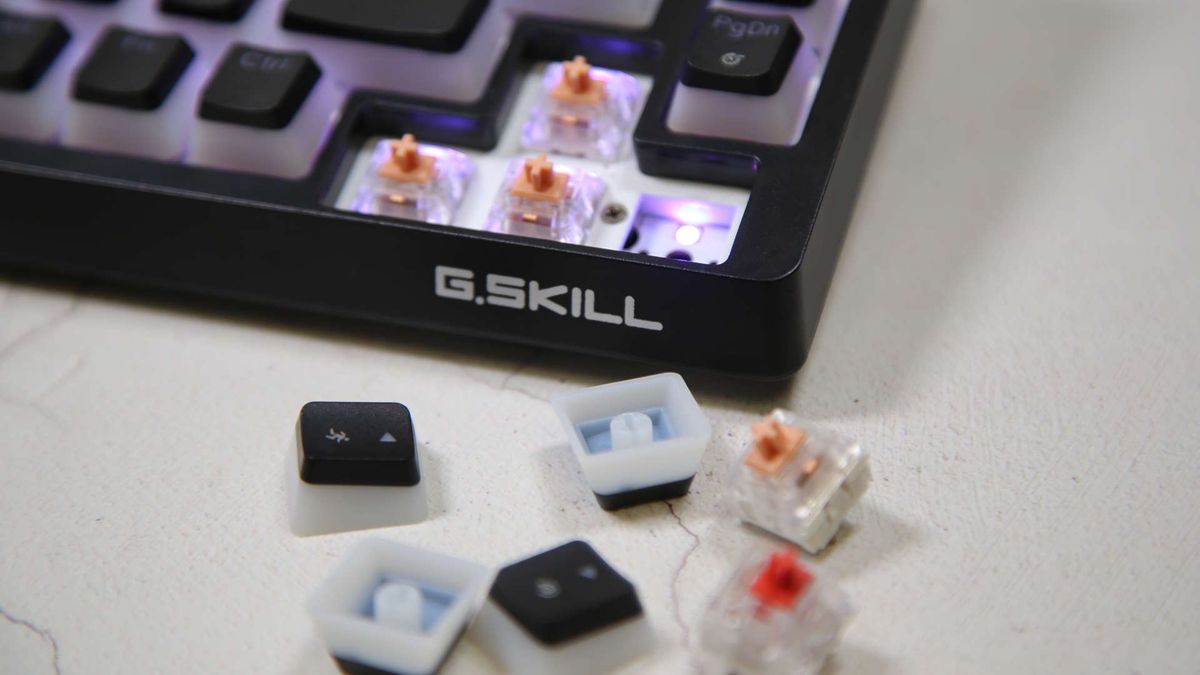
We’ve years of experience testing gaming keyboards on team. Each and every keyboard include in this guide has been reviewed by a professional. To do that, we use the keyboard extensively during the test period, inspect the switches, utilize the software, and use any special features the keyboard may have.
A big part of a keyboard’s quality is how it feels to type on, and that comes down to the key switches. Are they sticky? Are they smooth? Do they feel like they’re filled with sand? Have they been lubed? There are a lot of variables for just the key switches alone. We know what is best for gaming and typing, and what definitely isn’t.
As for the keyboard, the layout can be a sticking point for some, as well as where the media keys are placed. Even the type face is a key point of contention for these boards, and we do judge them on every aspect to make sure we’ve picked the best for your money.
Also tested
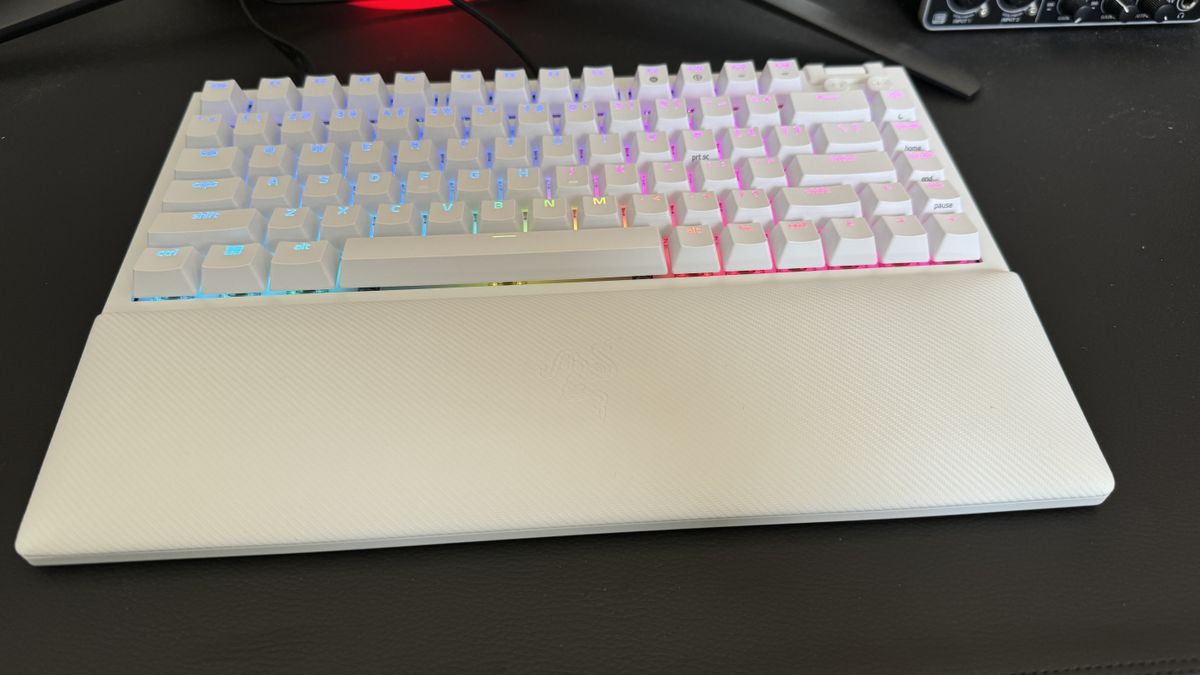
A great way into hot-swappable keyboards, the BlackWidow V4 75% is just pipped to the top spots by other keebs we enjoyed gaming on a little more.
PC Gamer score: 75%
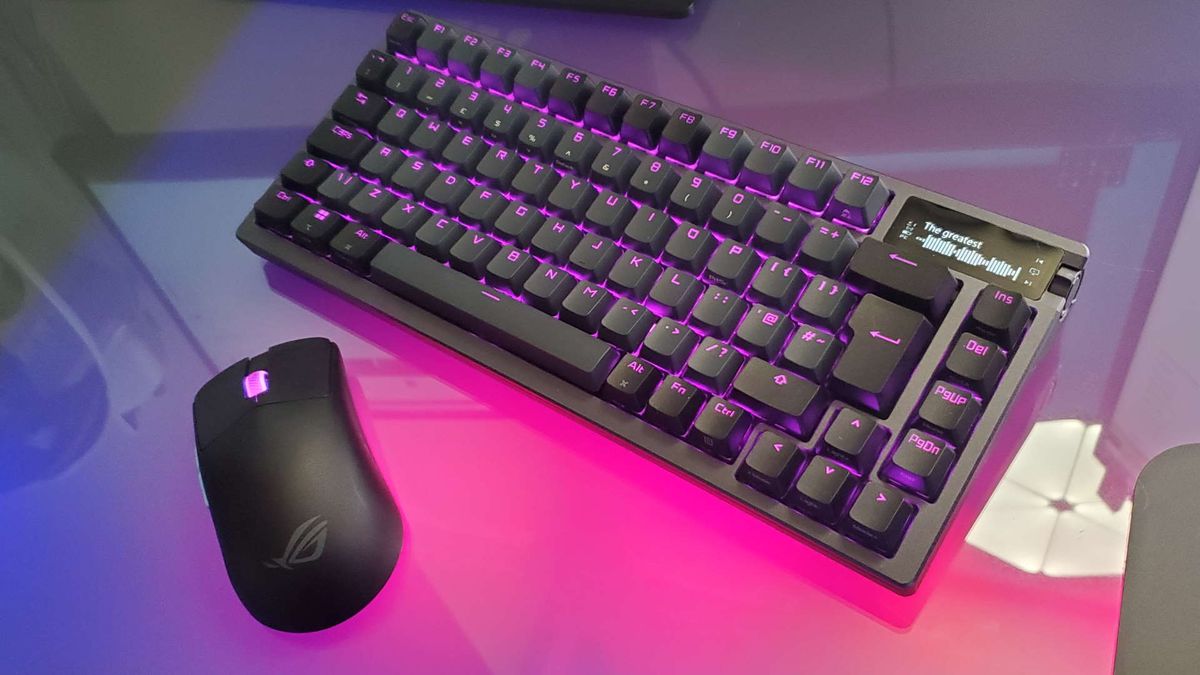
The Azoth is a mighty high-end gaming keyboard in a miniature package. It’s wonderful, and used to rank in this guide, though we think the Q3 Max from Keychron just about does it better sans screen.
PC Gamer score: 90%
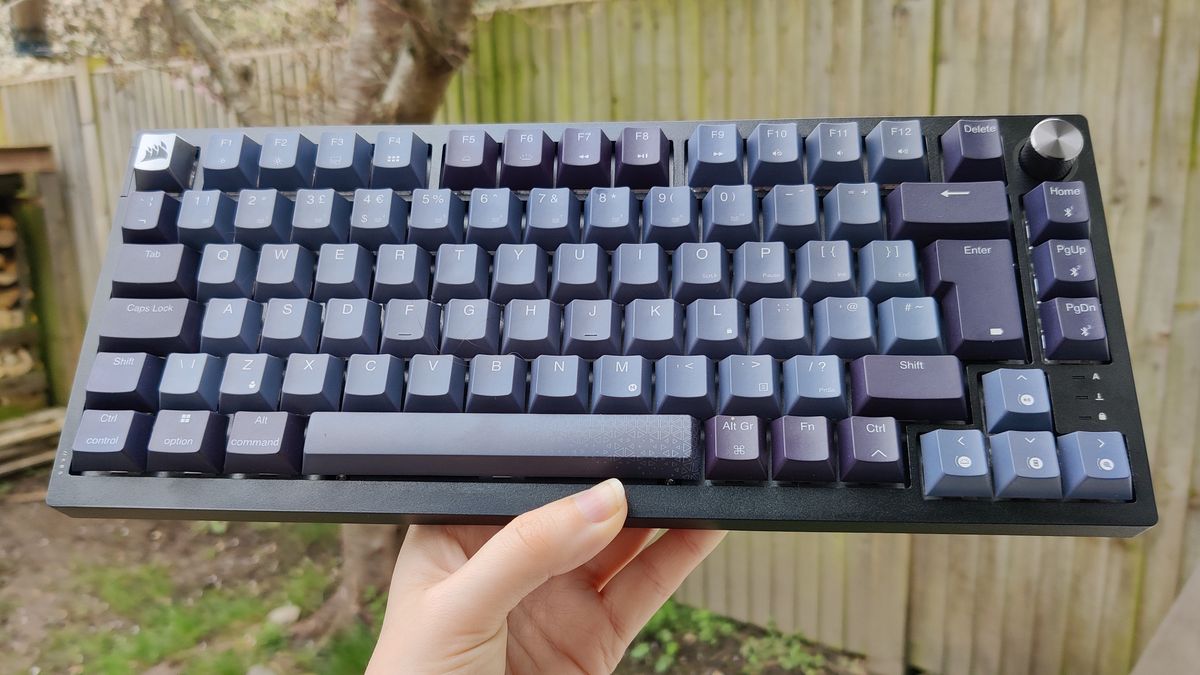
Corsair hasn’t skimped out with the K65 Plus, covering all the basics you’d want from a compact keyboard of that price, and topping it with a great battery life. The company assumes non-linear switch likers already have key switches ready to swap out, though, offering zero alternatives to its own linear reds with the base model.
PC Gamer score: 88%
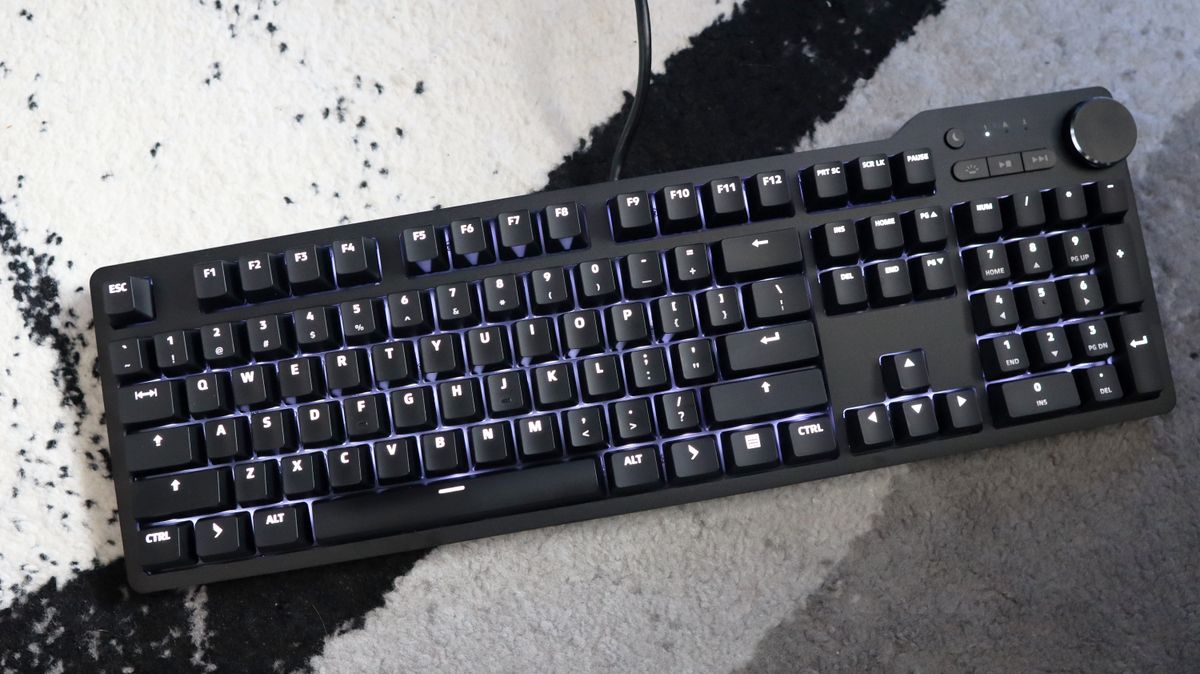
Das Keyboard 6 Professional review
A sublime mechanical keyboard that nails the basics, with thoughtful physical touches and a comfortable, tactile typing experience. The Das Keyboard 6 Professional looks smart and feels fantastic, even if it lacks any software.
PC Gamer score: 90%
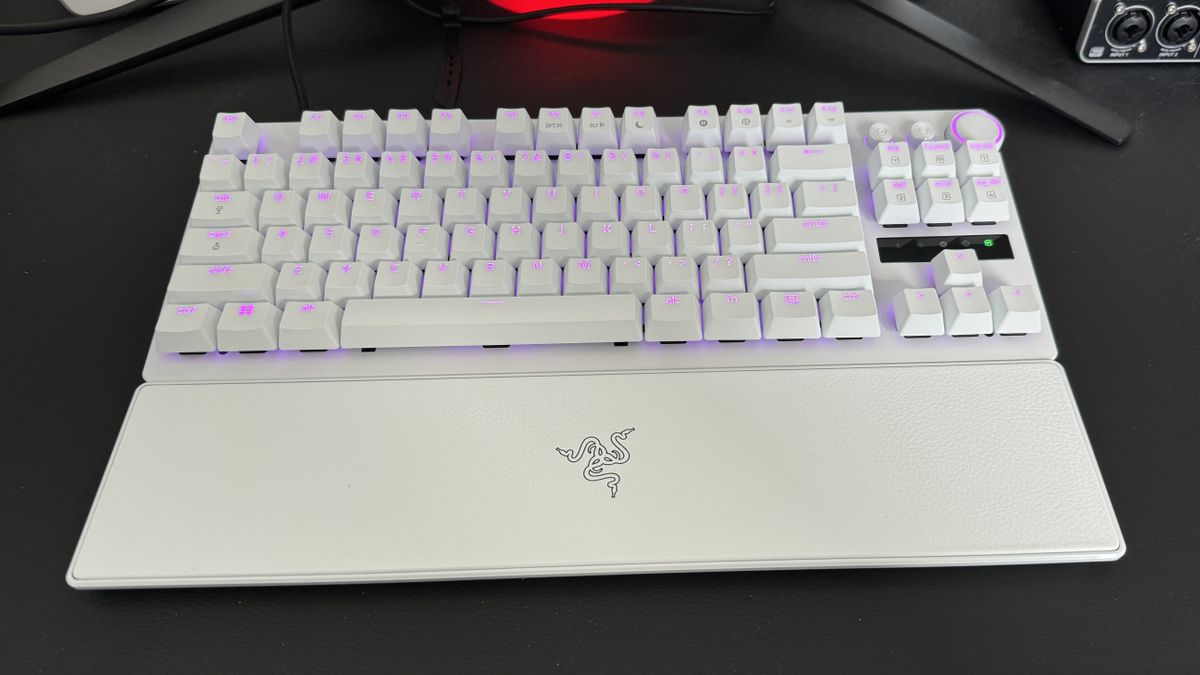
Razer Huntsman V3 Pro TKL
There are a lot of impressive TKL keyboards on the market today. The Razer is one of them, if only beaten out by the Q3 Max for the money.
PC Gamer score: 85%
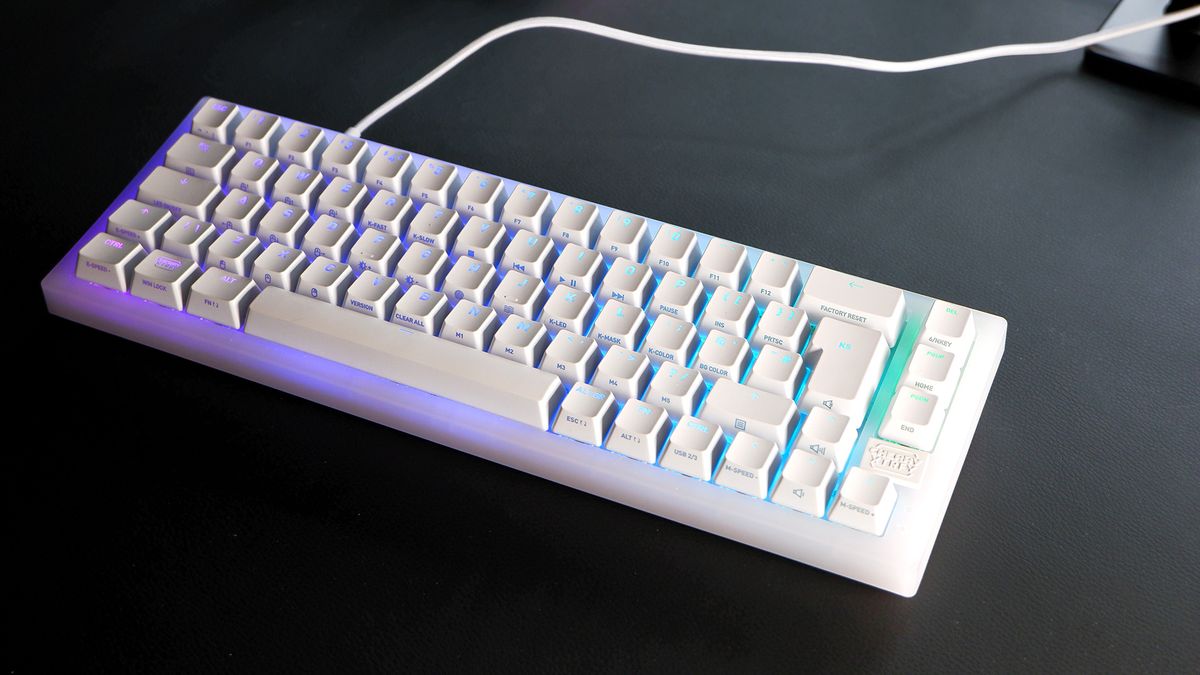
Cherry’s new switch is a marked improvement over its extremely popular and widespread predecessor, and the Xtrfy K5V2 keyboard is a lavishly lit and sturdy home for them. Though there are nicer feeling, and cheaper, compact keyboards on the market. Nothing about the Xtrfy makes it sing for me.
PC Gamer score: 71%
How to spot the best deal
Where are the best gaming keyboard deals?
In the US:
In the UK:
What is the big deal with mechanical switches?
We can talk for hours about the feel of mechanical switches versus membrane switches, but ultimately that’s a personal choice. What makes mechanical switches objectively superior, however, is their far extended life span. They can take far more punishment and keep responding long after a membrane switch has collapsed in on itself.
Why do gamers use 60% keyboards?
The main reason gamers will use compact 60% keyboards is because the smaller form factor allows for more space for your gaming mouse. That means you can have to DPI levels in your mouse lower, offering greater accuracy but also necessitating wider sweeping movements.
It also means that your hands resting on the WSAD keys and the mouse are closer together, which in turn improves the ergonomic posture, either when gaming or simply using your computer.
What is the most important thing to look for in a mechanical gaming keyboard?
The switch type is arguably the most important choice to make when picking your new gaming keyboard. Cherry mechanical switches are the most common and most recognizable, but there are a host of alternatives on offer, as well a bunch of upmarket, specialist switches to choose from.
Are dedicated media controls a deal-breaker?
Only you can make that call, but we would suggest that at least having the option to toggle the top row between function and media controls would be our choice. Having a discrete volume wheel can be super useful, however.
What size of keyboard do I need?
Keyboard size is absolutely a defining factor. Full-sized keyboards tend to offer the most features and a Numpad, but if you don’t have space, then all of those extras you paid for will be useless. Tenkeyless boards (the ones with no number pad) and compact keyboards can be a great option, too, if you don’t care about all the extra bells and whistles or you don’t have any use for alt codes (how barbaric!).
Jargon buster
Actuation Point
The height to which a key needs to be pressed before it actuates and sends an input signal to a device.
Clicky
A switch that delivers an audible click every time it’s pressed, generally right around the point of actuation.
Debounce
A technique to ensure that only one input registers every time a key is pressed.
Housing
The shell that surrounds the internal components of a switch.
Hysteresis
The result of the actuation point and reset point in a switch being misaligned. This generally means a key needs to be lifted off further than normal before it can be actuated again.
Linear
A switch that moves directly up and down, generally delivering smooth keystrokes without noise or tactile feedback.
Mechanical Keyboard
A keyboard built around individual switches for each key rather than a membrane sheath mounted on a PCB.
Membrane Keyboard
A keyboard on which all the keycaps are mounted on a membrane sheath; when a key is pressed, a rubber dome depresses and pushes against the sheath and PCB beneath, actuating the key.
Stem
The component of a switch on which the keycaps are mounted on a mechanical keyboard.
Switch
The physical component of a mechanical keyboard beneath the keycaps on a mechanical keyboard. The switch determines how a key is actuated, whether or not it provides audible or tactile feedback with each press, and more.
Optical switch
This is a type of mechanical switch which instead of a physical metal contact switch uses light to measure when actuation takes place. These can be more configurable too, allowing for not just off and on states, but more analog designs, and even dual actions for a single key depending on how far the switch is pressed down.
Tactile
A switch that provides a ‘bump’ of feedback every time it’s pushed.
Tenkeyless (TKL)
A keyboard that lacks the right-hand number pad.
Source link












